Essay on Captain Vikram Batra Gallantry Award Winner & Kargil War Hero – Download PDF
Published by team sy on september 15, 2023 september 15, 2023.
Essay on Captain Vikram Batra Gallantry Award Winner: In the annals of India’s military history, few names shine as brightly as Captain Vikram Batra’s. A gallantry award winner and a hero of the Kargil War, Captain Vikram Batra’s life story is one of unwavering courage, indomitable spirit, and the ultimate sacrifice for his nation. In this article, we delve into the inspiring journey of Captain Vikram Batra, a man who personified the highest ideals of heroism and patriotism. From his early days, marked by a deep sense of duty, to his fearless leadership on the battlefield, we explore the extraordinary life that has left an enduring legacy. Join us as we pay tribute to this remarkable individual, whose courage and selflessness continue to inspire generations and serve as a symbol of the undying spirit of heroism. This is an essay on Captain Vikram Batra, a gallantry award winner and Kargil War hero, whose story is a testament to the values that make a true hero.
Table of Contents

Essay on Captain Vikram Batra Gallantry Award Winner – 150 Words
Captain Vikram Batra, a true hero and gallantry award winner, left an indelible mark on the annals of Indian military history. Born on September 9, 1974, in Palampur, India, he displayed exceptional courage during the Kargil War of 1999.
Captain Batra’s defining moment came during the capture of Point 5140, a strategically important peak in the Kargil sector. His fearless leadership and determination inspired his comrades as he led them in the face of heavy enemy fire. It was during this operation that he famously exclaimed, “Yeh Dil Maange More” (This heart craves for more), displaying his indomitable spirit.
Tragically, Captain Vikram Batra made the ultimate sacrifice for his country on July 7, 1999, while saving a fellow soldier. His selflessness and unwavering commitment to the nation earned him the Param Vir Chakra, India’s highest wartime gallantry award.
Captain Batra’s legacy continues to inspire generations, reminding us that true heroes are those who put the safety and well-being of their comrades and country above all else. His bravery and sacrifice will forever be etched in our hearts.
Essay on Captain Vikram Batra Gallantry Award Winner – 300 Words
Captain Vikram Batra was a young Indian Army officer who was awarded the Param Vir Chakra, India’s highest military decoration, for his bravery during the Kargil War in 1999. He was known by his nickname, “Shershaah”, which means “Lionheart”.
Batra was born in Palampur, Himachal Pradesh, India, in 1974. He was a bright and motivated student, and he joined the Indian Army after graduating from college. He was commissioned as an officer in the 13th Battalion of the Jammu and Kashmir Light Infantry.
During the Kargil War, Batra was deployed to the Drass sector. He led his men in a series of daring attacks against the Pakistani positions on Tiger Hill and Point 4875. He was wounded several times, but he refused to give up.
On July 7, 1999, Batra was killed in action while leading his men to capture Point 4875. He was posthumously awarded the Param Vir Chakra for his bravery and leadership.
Batra is a national hero in India. He is remembered for his courage, determination, and patriotism. He is an inspiration to all who know his story.
Here are some of the values that Captain Batra embodied:
Courage : He was always willing to put himself in danger to protect his country and his fellow soldiers. Leadership : He was a natural leader who inspired his men to follow him into battle. Determination : He never gave up, even in the face of great adversity. Patriotism : He was a true patriot who was willing to sacrifice his life for his country.
Captain Batra is an inspiration to us all. He showed us that anything is possible if we have the courage to dream big and the determination to never give up.
Essay on Captain Vikram Batra Gallantry Award Winner – 750 Words
Courage : Batra was always willing to put himself in danger to protect his country and his fellow soldiers. He once said, “Yeh dil maange more” (This heart wants more), which became his motto. Leadership : Batra was a natural leader who inspired his men to follow him into battle. He was always calm and collected under pressure, and he always put the needs of his men first. Determination : Batra never gave up, even in the face of great adversity. He once led his men in a night attack against a heavily fortified Pakistani position, even though he was wounded in the leg. Patriotism : Batra was a true patriot who was willing to sacrifice his life for his country. He once said, “I will either come back with a flag, or on a flag.”
Captain Batra is an inspiration to us all. He showed us that anything is possible if we have the courage to dream big and the determination to never give up. He is a reminder that we should always be willing to stand up for what we believe in, even in the face of danger.
Batra’s story is a testament to the power of the human spirit. He was a young man who achieved great things, and he left a lasting legacy behind. He is a true hero, and his story will be told for generations to come.
In addition to the values mentioned above, Batra also embodied the following values:
Selflessness : Batra was always willing to put the needs of others before his own. He once said, “I am not a hero. I am just a soldier who is doing his duty.”
Humility : Batra was a humble man who never sought the spotlight. He was always quick to praise his men and downplay his own accomplishments.
Discipline : Batra was a disciplined soldier who always followed orders. He was also a strict disciplinarian, and he expected his men to live up to the highest standards.
Captain Batra was a true role model for all of us. He was a man of courage, determination, patriotism, selflessness, humility, and discipline. He is an inspiration to us all, and his story will continue to inspire future generations.
Essay on Captain Vikram Batra Gallantry Award Winner – 1000 Words
The story of Captain Vikram Batra is one that epitomizes heroism, valor, and unwavering dedication to duty. Born on September 9, 1974, in Palampur, Himachal Pradesh, Captain Vikram Batra left an indelible mark on Indian military history through his extraordinary courage and sacrifice during the Kargil War of 1999. His life and actions continue to inspire generations, making him a true icon of gallantry and selflessness.
Early Life and Inspiration
Vikram Batra’s journey to becoming a gallantry award winner began in his hometown of Palampur. Raised in a family that cherished patriotism and service to the nation, young Vikram was instilled with a deep sense of duty from an early age. His father, Mr. G.L. Batra, had served in the Indian Army, and his stories of valor and sacrifice deeply influenced Vikram. It was from his father that he imbibed the values of discipline, integrity, and love for the country.
The Journey to Joining the Indian Military Academy
Vikram Batra’s aspiration to join the armed forces was crystal clear. He pursued his education at D.A.V. College in Chandigarh and later secured admission to the prestigious Indian Military Academy (IMA) in Dehradun. His journey to IMA was not without its challenges, but his determination and resolve were unshakable. He was a diligent cadet, known for his unwavering commitment to excellence.
The Kargil War and the Battle for Point 5140
The year 1999 marked a pivotal moment in Captain Vikram Batra’s life and in the history of the Indian armed forces. The Kargil War erupted as Pakistani intruders occupied strategic positions in the Kargil sector of Jammu and Kashmir. It was during this conflict that Captain Batra’s valor would shine brightly.
One of the most iconic moments of the Kargil War came during the capture of Point 5140, a peak that held significant strategic importance. It was here that Captain Batra’s courage and leadership came to the forefront. Under heavy enemy fire, he led his men fearlessly, displaying exceptional battlefield tactics and sheer determination.
It was during this operation that Captain Batra uttered the now-famous words, “Yeh Dil Maange More” (This heart craves for more), expressing his indomitable spirit and resolve to push forward. His unwavering commitment to the mission and the safety of his comrades was evident to all.
The Ultimate Sacrifice
While the capture of Point 5140 was a significant victory, it came at a great cost. On July 7, 1999, Captain Vikram Batra made the ultimate sacrifice for his country. While saving a fellow soldier, he was hit by enemy fire and succumbed to his injuries. His passing was a moment of immense sorrow for the nation, but it also marked the emergence of a legend.
The Param Vir Chakra – India’s Highest Gallantry Award
Captain Vikram Batra’s selflessness and bravery did not go unnoticed. His unwavering commitment to the nation and his comrades earned him the Param Vir Chakra, India’s highest wartime gallantry award. The citation for the Param Vir Chakra recognized his “indomitable spirit, outstanding leadership, and determination beyond the call of duty, in the face of the enemy.”
Captain Vikram Batra’s Legacy
Captain Vikram Batra’s legacy extends far beyond the medals and honors he received. His life is a testament to the values of courage, selflessness, and unwavering commitment to duty. He remains an inspiration not only to those in the armed forces but to all who aspire to lead lives of purpose and service.
Beyond the Battlefield
Captain Vikram Batra’s impact was not limited to the battlefield. His life and sacrifice continue to motivate young men and women across India to join the armed forces and serve their nation with dedication and pride. He is a symbol of the highest ideals of heroism and patriotism.
The Immortal Words
“Yeh Dil Maange More” – these words will forever resonate in the hearts of all Indians. They symbolize the unyielding spirit of a man who dared to dream, dared to fight, and dared to make the ultimate sacrifice for his country. Captain Vikram Batra’s legacy is immortalized not only in these words but in the hearts and minds of all those who cherish the values he embodied.
In conclusion, Captain Vikram Batra’s life is a beacon of courage, selflessness, and unwavering dedication to duty. He is not just a gallantry award winner but a true hero who continues to inspire generations. His story reminds us that true greatness lies in service to others and one’s country, even in the face of adversity. Captain Vikram Batra’s life and sacrifice are a testament to the enduring spirit of heroism that resides within the hearts of those who serve their nation with unwavering commitment and devotion. He will always be remembered as a symbol of valor and an embodiment of the highest ideals of duty, honor, and sacrifice.
FAQs on Captain Vikram Batra Essay
Captain Vikram Batra was a distinguished officer in the Indian Army who gained fame for his exceptional courage and heroism during the Kargil War of 1999.
Captain Batra’s iconic quote is “Yeh Dil Maange More” (This heart craves for more), which he exclaimed during the capture of Point 5140 in the Kargil sector, symbolizing his indomitable spirit.
Captain Vikram Batra was posthumously awarded the Param Vir Chakra, India’s highest wartime gallantry award, in recognition of his exceptional leadership and courage on the battlefield.
Captain Batra made the ultimate sacrifice for his country on July 7, 1999, while saving a fellow soldier during combat in the Kargil War.
Captain Vikram Batra’s legacy extends beyond his military honors; he remains an inspirational figure whose life story embodies the values of courage, selflessness, and unwavering commitment to duty, continuing to inspire generations of Indians.
Leave a Reply Cancel reply

Your email address will not be published. Required fields are marked *
Related Posts

The Wonder of Science Essay English – Know why Science is important!
The Wonder of Science Essay: Scientific reasoning, inventions, and discoveries have paved a path of comfort and ease for the entire human race. All economic sector has undergone phenomenal development in every sphere due to Read more…

Indigenous Technologies for Viksit Bharat Essay – Download PDF
Indigenous Technologies for Viksit Bharat Essay – Marking National Science Day 2024, the theme “Indigenous Technologies for Viksit Bharat” resonates deeply with India’s aspirations for a self-reliant and developed future. As we celebrate the remarkable Read more…

Role of Youth in Society Essay – Download Free PDF
Role of Youth in Society Essay: In today’s dynamic world, the role of youth in society stands as a beacon of hope and catalyst for transformation. This essay delves into the pivotal role that young Read more…
- International
- Today’s Paper
- Premium Stories
- 🗳️ Elections 2024
- Express Shorts
- Maharashtra HSC Result
- Brand Solutions
Shershaah: Why the story of Captain Vikram Batra has enduring appeal
We revisit the story of captain vikram batra, and his contribution to india's victory in the kargil conflict..
A recently released Hindi film, Shershaah, has brought the spotlight back on Captain Vikram Batra, a war hero who had been martyred during the Kargil war of 1999. The film, which stars Sidharth Malhotra and Kiara Advani in key roles, started streaming on Amazon Prime Thursday, in time for the 75th Independence Day of India. We revisit the story of Captain Vikram Batra, and his contribution to India’s victory in the Kargil conflict. Batra was awarded the Param Vir Chakra, India’s highest gallantry honour for his valour, posthumously.
Born to teachers

Captain Vikram Batra was born to a family of teachers, his father a principal of a government school and his mother a school teacher. Batra was active in sports during his school time, especially in table tennis and karate, in which he was a green belt holder.
Batra attended the DAV college in Chandigarh , enrolling in Bsc Medical Sciences. It was during his stint at the DAV college that he became a cadet with the National Cadet Corps (NCC). He was adjudged the best NCC Air Wing cadet of Punjab Directorate, North Zone, during the inter-state NCC Camp. Batra soon worked his way up to become the Senior Under Officer at his NCC unit and eventually marched at the Republic Day Parade in 1994. That’s when he told his parents he wanted to join the army.
Batra also had an offer from a shipping company headquartered in Hong Kong to join the merchant navy. But Batra declined the offer and enrolled in a MA English course at Panjab University instead, so he could prepare for the Combined Defence Services (CDS) exam.

Top recruit
Batra took the CDS exam and was selected by the Services Selection Board (SSB) at Allahabad in 1996. In the order of Merit, Batra was among the top 35 recruits. After completing an year in his MA course, Batra joined the Indian Military Academy(IMA) in Dehradun and was part of the Manekshaw Battalion.
He completed a rigorous 19-month training course and was commissioned into the Indian Army as lieutenant in the 13th battalion, Jammu and Kashmir Rifles. He received his first posting to Sopore, Baramulla, after he underwent additional training in Jabalpur, Madhya Pradesh .
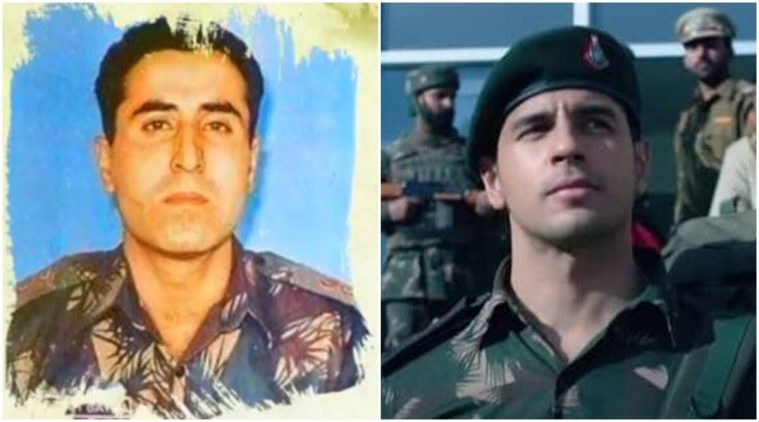
Sopore was an area of significant militant activity, and Batra had many skirmishes with the militants. Batra also undertook the Commando course in Belgaum and was awarded the highest honour — that of an Instructor’s Grade.
The Kargil War
Batra’s battalion, the 13 JAK Rifles came to Drass in early June. By then, the Kargil conflict had been underway for a month and had escalated to a full-out war. Irregular and regular Pakistani troops had infiltrated into the Indian side of the Line Of Control and captured strategic Indian territories. The Indian Army, with the help of the Indian Air Force, had launched Operation to reclaim the territories.
Batra’s battalion, the 13 JAK Rifles were to act as reserves to the 2nd battalion, the Rajputana Rifles. The 13 JAK Rifles played a significant role in the capture of Point 5140 under the leadership of Lt Col. Yogesh Kumar Joshi. It was during the briefing for the capture of Point 5140 that Batra used the phrase ‘Yeh Dil Mange More’ – taken from a popular Pepsi ad campaign – as his success signal.
Batra was severely injured during the attack, but he killed three enemy combatants and a large number of arms and ammunition were recovered. India didn’t suffer a single loss of life during the capture of Point 5140. In fact, the victory started off a string of successful recaptures, and the Indian army captured Point 5100, Point 4700, Junction Peak and the Three Pimple Complex.
Distinguished himself
Lieutenant Batra’s triumph at Point 5140 had been played across on national TV. General Ved Prakash Malik, the then Chief of Army Staff had called Batra up personally to congratulate him on the triumph. Batra, who was still a lieutenant at that point, was promoted to the rank of a Captain.
In the meanwhile, his battalion the 13 JAK Rifles was sent to Mushkoh valley, under the command of 79 Mountain Brigade. The battalion was assigned the task of recapturing Point 4875, a peak that held significant strategic importance, for it dominated National Highway 1, right from Dras to Matayan. It made a stretch of about 35-40 kilometres of national highway come under direct observation of the Pakistani forces, and they could easily watch the Indian army’s movements and troops movements.
Batra was unwell with fever and was recuperating in a sleeping bag. After initial reconnaissance, the operation was launched at night. The assault continued all night, with Indian forces facing stiff enemy fire from Pakistani snipers. Point 4875 was captured, and so was Area Flat Top an adjacent peak. But immediately after that, enemy forces launched their first counter offensive to recapture Area Flat Top. The Indian army was holding the area under Captain NA Nagappa, and they had fended off the first counter attack. Nagappa was injured. At the same time, the Pakistani forces started a second counter-attack to gain back Area Flat Top.
At this stage, Batra volunteered himself as reinforcement for the attack. Several other soldiers of his company offered to accompany him, without official orders. Many even risking a court martial. Batra, accompanied by 25 other men, prayed at a Durga temple and left in the middle of the night to recapture the feature.
The battle continued till daylight. Batra killed four enemy soldiers and successfully defended Area Flat Top. He was evacuating an injured soldier when he was hit in the chest from an enemy sniper and a second later was hit by a Rocket Propelled Grenade(RPG). Batra breathed his last next to his fellow company man.
- How joblessness in India has hurt all communities over the last 8 years
- Why Indian armed forces will shift to integrated theatre commands
- Scarlett Johansson vs OpenAI: What are personality rights?
Captain Batra was awarded the Param Vir Chakra on August 15, 1999. The award was received by his father on January 26, 2000, during the Republic Day Parade by President KR Narayanan.
Part of the citation read “ …Despite sustaining grave injuries, he crawled towards the enemy and hurled grenades clearing the position with utter disregard to his personal safety, leading from the front, he rallied his men and pressed on the attack and achieved a near impossible military task in the face of heavy enemy fire. The officer, however, succumbed to his injuries.
Inspired by his daredevil act, his troops fell upon the enemy with vengeance, annihilated them and captured Point 4875. Captain Vikram Batra, thus, displayed the most conspicuous personal bravery and leadership of the highest order in the face of the enemy and made the supreme sacrifice in the highest traditions of the Indian Army.”
Captain Batra has been recognised across the country for his valour and bravery. Given his role in the capture of Point 4875, the mountain has been named Batra Top. The Service Selection Centre in Allahabad has named a hall as the Vikram Batra Block. The IMA in Dehradun has named a cadet’s mess as the Vikram Batra Mess. The Mukarba Chowk and its flyover have been renamed Shaheed Captain Vikram Batra Chowk.
The film, Shershaah, revisits the life and journey of Captain Vikram Batra, complete with his relationship with Dimple Cheema. In the film, actor Kiara Advani plays the role of Cheema. It’s not the first time that Batra’s life has been captured on screen, In the 2003 war film LOC:Kargil, actor Abhishek Bachchan essayed the role of Vikram Batra.
Newsletter | Click to get the day’s best explainers in your inbox
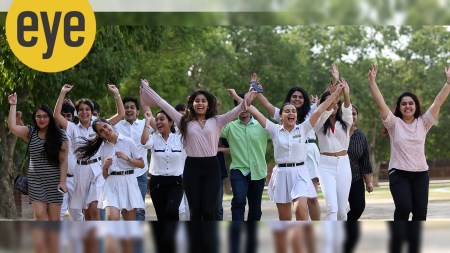
Children can be subversive change-makers Subscriber Only
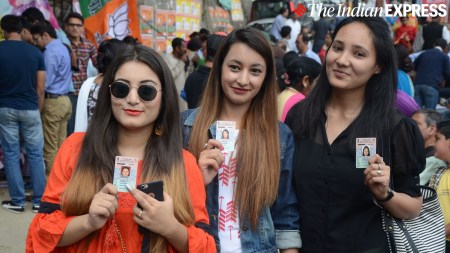
Love at first vote: Gen Z is no longer apolitical
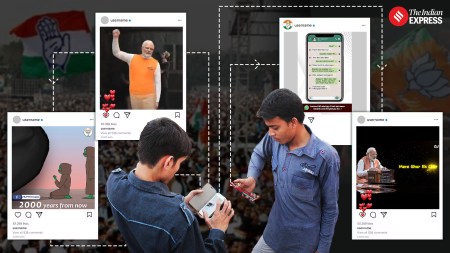
Journey of a political meme: From digital war room to Subscriber Only

Managing teen anger

Great Butter Rebellion to Gaza: History of student protests in Subscriber Only

Without vets or hospitals, how do wild animals treat themselves Subscriber Only
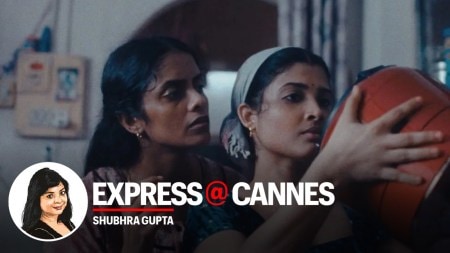
All We Imagine As Light is a meditative soliloquy on

Why breakups in the 30s feel different for women
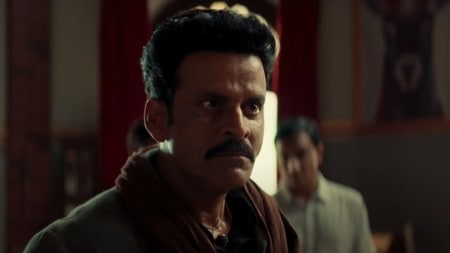
Bhaiyya Ji does Manoj Bajpayee no credit
- Capt. Vikram Batra
- Explained Culture
- Express Explained

Five-time World Champion Magnus Carlsen, the oldest player in a recent tournament in Poland, faced three Indian players. In an interview, he expressed his enthusiasm for the upcoming Norway Chess tournament, his admiration for Indian players, and gave advice to upcoming players like D Gukesh. He also shared his thoughts on the popular series, The Queen's Gambit, and the future of chess.

More Explained

Best of Express
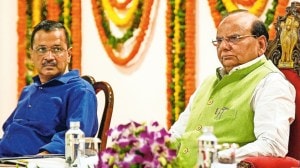
EXPRESS OPINION

May 25: Latest News
- 01 Bengaluru’s annual Mango Mela begins at Lalbagh but sellers worried over low crop yield
- 02 Defense spending measure would bar Chinese lidar sensors in US military systems
- 03 SRH vs RR emotional rollercoaster: Sunrisers at home in Chennai, stunning Heinrich Klaasen six, the inevitable Mr. Trent Boult
- 04 SC stays Uttarakhand HC order for its relocation out of Nainital
- 05 BMC appeals to residents to shift from landslide-prone locations ahead of monsoon
- Elections 2024
- Political Pulse
- Entertainment
- Movie Review
- Newsletters
- Web Stories

Essay on Captain Vikram Batra
Students are often asked to write an essay on Captain Vikram Batra in their schools and colleges. And if you’re also looking for the same, we have created 100-word, 250-word, and 500-word essays on the topic.
Let’s take a look…
100 Words Essay on Captain Vikram Batra
Captain Vikram Batra was born on September 9, 1974, in Palampur, Himachal Pradesh. He was a bright student and a sports enthusiast.
Military Career
In 1996, he joined the Indian Military Academy. He was commissioned into the 13 JAK Rifles of the Indian Army.
During the 1999 Kargil War, Captain Batra’s unit was tasked with recapturing Point 5140. His leadership led to the Indian victory.
Bravery and Sacrifice
On July 7, 1999, while rescuing an injured officer, Captain Batra was martyred. His last words were “Jai Mata Di”.
For his bravery, he was posthumously awarded the Param Vir Chakra, India’s highest military honor.
250 Words Essay on Captain Vikram Batra
Introduction.
Captain Vikram Batra, one of India’s most celebrated war heroes, displayed unparalleled bravery during the Kargil War in 1999. His extraordinary courage and indomitable spirit continue to inspire countless individuals.
Early Life and Induction into the Army
Born on September 9, 1974, in Palampur, Himachal Pradesh, Batra joined the Indian Military Academy in 1996. Commissioned in the Jammu and Kashmir Rifles, his leadership skills and dedication were evident from the beginning.
The Kargil War
During the Kargil War, Batra’s unit was tasked with recapturing Peak 5140. Despite the challenging terrain and heavy enemy fire, Batra led his team to victory, earning him the nickname ‘Sher Shah’. His famous battle cry, “Yeh Dil Maange More!”, became a symbol of India’s fighting spirit.
Supreme Sacrifice
Batra’s next mission was to recapture Peak 4875. Despite being severely injured, he killed five enemy soldiers in close combat. However, while rescuing an injured comrade, Batra was fatally wounded.
Posthumously awarded the Param Vir Chakra, India’s highest military honor, Batra’s story of valor continues to motivate generations. His life serves as a reminder of the sacrifices made by our soldiers to uphold the nation’s sovereignty.
In conclusion, Captain Vikram Batra’s bravery, leadership, and ultimate sacrifice make him a true hero. His story is a testament to the spirit of the Indian Army and a source of inspiration for all.
500 Words Essay on Captain Vikram Batra
Captain Vikram Batra, an officer of the Indian Army, is a name that resonates with valor, courage, and the ultimate sacrifice. His indomitable spirit and unyielding commitment to the nation during the Kargil War of 1999 have made him a legendary figure in India’s military history.
Early Life and Career
Born on 9th September 1974 in Palampur, Himachal Pradesh, Vikram Batra was a charismatic individual since his childhood. After completing his master’s degree, he decided to join the Indian Military Academy, Dehradun, in 1996. He was commissioned as a Lieutenant into the 13th battalion, Jammu and Kashmir Rifles.
The Kargil War and Operation Vijay
The Kargil War in 1999 was a pivotal moment in Captain Batra’s life. As part of Operation Vijay, he was tasked with recapturing Peak 5140, a strategic point occupied by enemy forces. Displaying exceptional bravery and strategic acumen, Batra and his unit successfully recaptured the peak. His famous words, “Yeh Dil Maange More!” after the victory, became a rallying cry for Indian forces.
The Ultimate Sacrifice
After the successful operation at Peak 5140, Batra volunteered for a mission to recapture Peak 4875, a more challenging task due to its steep slope and fortified enemy positions. During the assault, he rescued an injured officer, Lieutenant Naveen, under heavy enemy fire, but was fatally wounded in the process. His last words, “Jai Mata Di,” exemplify his indomitable spirit and unwavering devotion to his duty.
Legacy and Honors
For his exceptional courage, Captain Vikram Batra was posthumously awarded the Param Vir Chakra, India’s highest military honor. His life and sacrifice continue to inspire countless Indians and serve as a testament to the selfless service and bravery of the Indian Armed Forces. Captain Batra’s story has been immortalized in books, documentaries, and films, ensuring that his legacy of bravery and sacrifice continues to live on.
Captain Vikram Batra’s life is a shining example of the power of courage, determination, and patriotism. His story serves as a beacon of inspiration for future generations, reminding us that the ultimate duty towards one’s nation can sometimes demand the ultimate sacrifice. His legacy will forever remain etched in the annals of Indian military history, a symbol of unyielding courage and indomitable spirit.
That’s it! I hope the essay helped you.
If you’re looking for more, here are essays on other interesting topics:
- Essay on Camera
- Essay on Brahmagupta
- Essay on Soil Erosion
Apart from these, you can look at all the essays by clicking here .
Happy studying!
One Comment
Amazing essay!!!! Beautifully written. Excellent job. Thank you so much. It really helped me in my project.
Leave a Reply Cancel reply
Your email address will not be published. Required fields are marked *
Save my name, email, and website in this browser for the next time I comment.


Editor's Pick
Of courage, valor and selflessness: vikram batra.
On the anniversary of his birth, let us take the time to reflect on the bravery and the selfless acts of Vikram Batra.

There has been a film made about him just recently. And while the film itself is an admirable adaptation of his life and the principles he lived by, it is crucial that we remember Vikram Batra in a more solemn manner. Awarded the Param Vir Chakra for his acts of valor during the Kargil War, Vikram Batra gave his life so that the men in his company could live. That singular act of selflessness and courage at the age of twenty-four is something that is worthy of true respect and reverence.
Born on 9th September 1974, in Palampur, Himachal Pradesh, Batra was the third child of Girdhari Lal Batra, a school principal, and Kamal Kanta Batra, a school teacher. Before going on to attend the DAV Public School, in Palampur, Batra would receive his primary education from his mother. Batra’s childhood, by all accounts, was one of complete engagement, with him not only excelling academically but also representing his school in several national-level sports competitions. Batra was especially skilled at table tennis, with him and his twin brother, Vishal, representing their school in that particular sport at the All India KVS Nationals.
Having finished his Bachelor’s degree, from the DAV College, Chandigarh, Batra would go on to pursue a Master’s degree in English Literature from Punjab University, Chandigarh, while simultaneously preparing for the Combined Defence Services (CDS) examinations. During that time, Batra would actually attend classes, at his university, in the evenings and spend his mornings working part-time as a branch manager at a local travelling agency. The sole reason he did that was to help his family avoid additional financial pressures. In 1996, having passed his CDS examination and selected, Batra left university to join the Indian Military Academy.
Beginning his tenure at the Indian Military Academy in June of 1996, Batra would undergo a nineteen month training course before being assigned to the 13th Battalion of Jammu And Kashmir Rifles (13 JAK Rifles), being commissioned as a lieutenant in the Indian Army. Before his battalion’s eventual deployment to Dras, due to the outbreak of the Kargil War, Batra would serve at Sopore in the Baramulla district of Jammu And Kashmir. During his time there, he would just narrowly escape death when his platoon came into conflict with a group of militants.
Vikram Batra’s time in the Kargil War can majorly be traced through two incredibly important skirmishes, that of the capture of Point 5140, a strategically important mountain peak in the Dras Sector, and the capture of Point 4875, another strategically important peak in the Mushkoh Valley.
With the 13 JAK Rifles assigned under the command of Lieutenant Colonel Yogesh Kumar Joshi, a strategic plan to capture Point 5140 came into being. Joshi would attack Point 5140 with the help of Bravo Company, under the command of Lieutenant Sanjeev Singh Jamwal, and Delta Company, under the command of Lieutenant Batra. On June 20th, 1999, just after midnight, the two companies began climbing the mountain peak. It wasn’t, however, till late into the day, that the two companies had consolidated their positions and claimed their respective objectives. Batra would go on to be crucial in the capture of Point 5140, even being able to recover a heavy anti-aircraft gun from the Pakistani forces positioned there. Famously, Batra’s call sign, signalling the success of his company in achieving their directed goal, was ‘Dil Mange More’.
Shortly after the capture of Point 5140, the 13 JAK Rifles were directed to move from Dras to Ghumri to rest and recoup, before being deployed to Mushkoh Valley on the 30th of June, 1999.
Upon their arrival, the 13 JAK Rifles were placed under the command of 79 Mountain Brigade, tasked with the capture of Point 4875. The peak dominated the National Highway 1 route from Dras to Matayan and, consequently, gave the opposing army an incredible observational advantage of approximately thirty to forty kilometres of the national highway. It became critical, then, for the Indian Army to claim this peak. And they did just that.
The victory, however, was short-lived. An adjacent peak to Point 4875, codenamed ‘Area Flat Top’, had been captured on July 5th, 1999, by the Indian Army. However, an immediate counterattack by the Pakistani Army followed. When the commanding captain, NA Nagappa, was injured in the defense of ‘Area Flat Top’, the Pakistani Army seized the opportunity to further their advance. The Indian platoon positioned at ‘Area Flat Top’ needed reinforcements immediately so that they could adequately hold the position. It was then that Batra, despite being sick and in recovery from his injuries from the battle of Point 5140, volunteered to lead a force to provide reinforcements. Twenty-five men from Batra’s Company, moved by his courage, volunteered to go with him, despite no direct orders being given.
With the situation dire, Batra and his Delta Company began to make the climb. It wasn’t until much later that they became aware of enemy presence on a narrow ledge, running north of Point Batra, alongside his men, was instrumental in destroying the positions that the Pakistani Army held along that ledge. However, they were pinned down due to heavy machine-gun fire at a later junction.
Realizing there was no other way around, Batra personally charged into the fray, managing to make the enemy retreat from their position. However, he sustained numerous injuries in the process. Still undeterred, Batra noticed one of his men had been injured in the firefight that had just ensued. It was then that he decided to help evacuate the injured soldier, along with the help of Subedar R. Singh. Batra, however, was adamant in shielding the injured soldier and Singh from enemy gunfire, placing himself in the direct line of fire. It was during that attempt, to save the lives of his men, that Batra was shot in the chest by an enemy sniper before a splinter, from an RPG, hit him in the head. Vikram Batra, finally, succumbed to his injuries.
Posthumously awarded the Param Vir Chakra, Vikram Batra served as a symbolic representation of the idea of selflessness and the pursuit of something greater than one’s own self.
Celebrating the face of Carnatic Music for over 70 years: M.S Subbulakshmi
No Small Steps: India At The Tokyo Paralympics

You may like

Remembering Keshav Vaman Bhole

Remembering Vijaya Mulay

Remembering Dr. R. Sathyanarayana

Satyajit Ray: Author And Filmmaker

Brij Narayan: Mastering the Melody of Sarod

Henry Louis Vivian Derozio: Bengali Social Reformer
Overcoming the fear of social media: an artist’s guide.
Let’s dive deep into the world of social media and find out why it sounds scary and how to get over that fear.

It’s not easy being social. But imagine the pressure when you have to be social because you want your talent to be recognised as an artist. Extroverts have forever ruled the social media page. But it’s not the same case for introverts or ambiverts. But just because you are struggling with being social on social media doesn’t mean you can’t succeed in the end. Without trying it will be too early to give up. So, let’s dive deep into the world of social media and find out why it sounds scary to us and how we can get over it.
Why is social media scary?
If you are someone who doesn’t like to be social, it’s a given that you must have heard from others going like, “It’s not a big deal dude, chill”. But they fail to understand that if you could “chill” then you wouldn’t worry so much about what to post on social media. Sometimes you wonder if you are sharing too much. And at other times you wonder if you’re sharing too little. Most of your worry about social media stems from your overthinking.
Apart from overthinking, we always tend to have this assumption that we don’t look as perfect as others or present as perfectly as others. Hence, we come to the conclusion that we should stop altogether. There is also the concern that you’re missing out on the latest trend. This concern further fuels the anxiety that is built on the fear of missing out and causes you to constantly scroll and be up to date with the recent events of social media, which will inevitably lead to a point where you get tired and just give up.
Although being able to be who you want to be, or in other words being anonymous seems like a boon of social media, it isn’t always the case. This holds true, especially for those artists who want to get the recognition that their art deserves through social media. As artists, it’s important to keep in touch with your followers to increase your influence but if you prefer to remain anonymous it may not work out that well for you. Then there’s the issue of deindividuation which refers to the perceived loss of individuality and personal responsibility when you’re in a group. Deindividuation occurs especially when you end up donning a new persona to satisfy your audience and feel detached from who you actually are.
Tips and strategies to get over your fear of social media
Just because these problems exist doesn’t mean you should give up on social media altogether. Hopefully, the following tips will help you regain your lost spark on social media.
- Take A Break:
We are sure that everyone must have told you to take a break from social media every now and then. But instead of taking a long hiatus, how about starting with a small one? And no it doesn’t have to be like a social media detox where you don’t even open the social media apps. Instead, you can take a hiatus from posting and being forced to update about yourself on social media every single minute of the day. Just scroll through social media like a regular user. Experience being a follower rather than an artist for once. Who knows what creative spark that might ignite?
- Create a community page:
Nowadays Instagram has come up with this option for artists and influencers to create a community page to interact better with their followers. Make use of this feature to create a community page for your own followers. This will not only reduce your burden of constantly getting harassed when you update about yourself on social media (as when you post on your social media grid as usual you are putting it out there for everyone which includes trolls as well) but will also boost your confidence as you will get honest feedbacks from followers who truly care about your growth as an artist and content on social media.
- Be responsive for at least 2-3 days after you post:
We understand that it’s hard to always be responsive and active on social media. And although consistency is the key to succeeding on social media, it takes a huge toll on mental health. So rather than being active 24/7 how about you stay active for a few days, say, 2-3 days after posting something new so that you can interact with your followers and others for some time while also taking some time off for yourself? As much as being active and constantly looking for inspiration on social media is effective, taking a break and letting your mind wander is equally important to spark your creativity.
- Don’t force yourself to show parts of your daily life:
We know it’s hard to constantly update your followers about your daily lives. And we know it’s equally hard for you to post anything without overthinking it much especially if you like to think of all the possible outcomes before posting. It’s impossible to entirely stop overthinking overnight, so it would be rather dumb of us to expect you to follow that advice. But rather than stressing over what to post every day, how about you post something that you find aesthetic enough for your social media grid every day instead? It doesn’t necessarily need to be related to your art. It could just be the sky if that made you smile that day. As long as you are comfortable posting about it, post it. You don’t necessarily need to post about a certain lifestyle because your followers demand that. Yes, as an artist you owe it to your followers to update them about your work in progress but you don’t need to provide a weekly report for the same. Take a break and maybe share something that made you smile that day. We are sure your followers would love to know you as a person beyond an artist as well. Plus, it will help you fight deindividuation as you show sides of yourself that are truly you. Don’t overthink it, just post!
- Let your followers know that you want to take a break:
It’s completely okay to take a break from social media. But what’s not okay is going MIA (missing in action). If you update your followers about your latest work, you should also update them about taking a break from social media especially if it’s for 2-3 weeks or more. You may not provide any elaborate justifications but a simple I will be taking a small break will be enough. But let them know. You don’t have to do it if you don’t want to, but if you do, do it, you will end up getting more followers who love and respect your boundaries. Social media was invented to ease communication, by taking the baton and communicating, you as an artist who has the potential to influence thousands of followers can influence them to use social media to its maximum potential, especially in terms of communicating about what you’re going through. Thus, making our society more open to discussing mental health disorders.
Social media is not an easy task to master. With new trends and updates it’s hard to keep track of it all. But instead of overthinking and seeing it as a checklist that you must tick off to master it, how about enjoying it? It’s only when you let go of all inhibitions and enjoy it that you really end up mastering it, as you tend to overthink less and are not afraid to try something new anymore.
Beauty Standards: It’s Hard To Not Look Beautiful
What are beauty standards? Are you beautiful?! Are you ugly?! Do beauty standards make any sense? Let’s find out!

Have you ever looked at someone and went like, “Oh my god! She/he looks so beautiful, I hope I could look the same, and not so ugly.” Or have you ever thought of something like “Why don’t I have hair like hers?”. Or maybe something like, “I love myself, I just wish my hair, and teeth were different.” If any of these thoughts have ever entered your mind and stayed for some time. And made you try various hacks to help you achieve that perfect look that you have been looking for, then it’s time that we discuss “beauty standards”.
What do beauty standards mean?
“Standard” refers to the bar or level that is set for something, such as if you score below or above this level or bar then you have done poorly. But if you meet the bar or level or exceed it then you have done amazingly. Think of standards like your grades on a report card. Certain criteria or grades are considered average. If you go below that you get below-average or fail, but if you go above it you get good or excellent. Hence we can safely say that the standard will remain the same at various places, such as our grades which remain more or less the same in every school in India.
“Beauty” refers to something that you like or find pleasing. Hence it can differ from one person to another. You might find bunnies beautiful but someone might might find cats beautiful. To understand this difference, how about we do a small activity? Close your eyes and ask your friend to close theirs as well and together say the word beautiful. The first image that pops up in your head is probably what you think is beautiful. And obviously what image popped up in your head when you said the word beautiful will be different from the one that popped up in your friend’s head for that same word. Thus, we can conclude that the idea of what is beautiful and who is beautiful is something that will be different for every person.
But you will be surprised that our society somewhere failed to understand this small concept of beauty as it insists that everyone must look a certain way. How many of you have heard from your relatives that, you must grow up to be fair, skinny and tall? This particular idea that almost all of our relatives share about beauty is something that a handful of very persuasive people once decided and persuaded others to follow. Hence, a standard or a grading system was created about what is beautiful and was followed for every decade (every ten years) or century (every hundred years). Yes, you heard that right this standard doesn’t remain the same all the time but rather changes with the change in the persuasive people’s ideas about what they like now or find pleasing. A few decades back curly hair was considered ugly or not so beautiful, but now everyone wants those big gorgeous curls. And what is more surprising is that this beauty standard changes from one country to another. In India, we are told not to play in the sun for long or else our skin will tan and we won’t be fair anymore. But in the UK being able to tan your skin is a status symbol as it highlights that you have the means to go to a sunny place to tan your skin. Just like in India, our society prefers fair skin over tan, in the UK it is the opposite.
Hence, we can agree that different people at different points in time had different beauty standards. And that is fine. What is not fine is imposing it on others. Imagine handing out chocolates to the entire class on your birthday. It’s fun, right? And it’s good that you want to do that. But expecting every one of your classmates to do that, don’t you think that’s a little unfair? Because some of them may not wish to do it, because perhaps the thought of going and giving chocolate to everyone in front of the class is a little scary to them, or the reason could be anything. If they don’t want to, we shouldn’t force them or shame them for it. Surely you probably don’t like being forced to eat the curry that is made with the vegetables that you don’t like so how can you force somebody else to eat a curry that they hate? Imposing beauty standards on others is just like that. We expect people to follow it even though they may not want to. And hence, it’s high time we try and stop that.
Who decides what is beautiful?
In the previous paragraph, we talked about a few persuasive people who decide what is beautiful to them and then manage to convince others to agree that the thing that they consider beautiful is indeed beautiful. But sometimes people do give the reason that it is the god who decides what is beautiful. And if we go by that logic, we also need to understand that we humans are created by god as per his own reflection. So, don’t you think by calling another human being ugly or not beautiful you are in a way calling god ugly, given that we are his reflection or image? Thus, we can’t give the baton to god especially when it comes to human beauty standards and say he decides who is ugly and who is beautiful.
It’s true that a few people alone can’t decide who is beautiful and who is ugly. For something to become a standard of beauty a lot of people need to agree to the standard. That is where our human flaws of insecurity upon seeing someone different from us take over. Instead of admiring them and ourselves for being different, we start to compete or try to be like them, completely forgetting that we are unique in our own way. Hence the beauty standard gets established as everyone tries to be like the other. And the other person they try to be like becomes the norm or the standard of beauty. To understand how this affects somebody else , let’s watch a video:
You Are Beautiful
It’s impossible to go and tape everyone’s mouth or educate everyone about how beauty standards don’t make any sense and hence, shouldn’t be imposed on others, and expect them to follow this in their daily lives. Hence, what we can do instead is accept ourselves, and see us for the unique individual that we are. Cause once we realise how amazing we truly are it will require a lot more than just taunts from our relatives or class bullies to hide the shine within us. We together can break the stupid cycle of imposing beauty standards by creating our own standards. And why are we so confident? Because we are beautiful, and we know it.
Keshav Vaman Bhole: A Maestro of Indian Cinema’s Musical Era- Celebrating the life and musical legacy of a pioneering composer and critic
Keshav Vaman Bhole, or Keshavrao Bhole as he was fondly known, was a luminary in the realm of Indian cinema. Born on May 23, 1896, in Amravati, Maharashtra, his journey began with the establishment of Natya-Manvantara, a theatrical company that laid the groundwork for his future exploits in film. His career, spanning several decades, has left an indelible imprint on Indian cinema, a legacy that continues to reverberate with audiences today.
Bhole’s foray into the world of cinema took a significant turn with his association with the esteemed Prabhat Film Company in 1933. Joining as a music composer, he would go on to create some of the studio’s most iconic hits, a testament to his musical genius and his ability to connect with the audience.
One of Bhole’s most celebrated works is the timeless classic ‘Amrit Manthan’, a masterpiece directed by V. Shantaram. This film, based on Narayan Hari Apte’s novel ‘Bhagyashree ‘, not only garnered widespread acclaim for its captivating narrative but also introduced a new era of music in Indian cinema. Bhole’s innovative orchestral compositions, incorporating piano, Hawaiian guitar, and violin, marked a significant departure from traditional Indian film music, setting a new standard for the industry.
Following “Amrit Manthan’s” success, Bhole continued to captivate audiences with his musical prowess in films like “Sant Tukaram”, a cinematic portrayal of the revered Varkari saint and poet. Directed by Vishnupant Govid Damle and Sheikh Fattelal, this groundbreaking film earned international recognition, cementing Bhole’s reputation as a musical virtuoso .
In “Kunku/Duniya Na Mane”, Bhole tackled social issues using his music to denounce the dowry system and advocate for women’s empowerment. The film’s memorable songs, including “Ek tha Raja Ek thi Rani” and “Jai Ambe Gauri Maiyya”, showcased Bhole’s ability to blend traditional melodies with contemporary themes, resonating deeply with audiences across generations.
Throughout his career, Bhole’s commitment to artistic innovation remained unwavering, evidenced by his groundbreaking work in films like “Sant Dnyaneshwar” and “Das Baje.” His compositions enriched the cinematic experience and reflected his deep understanding of Indian classical music and its cultural significance.
Bhole was also a revered critic, writing under the pseudonyms “Ekalavya” and “Suddha Saranga.” His insightful critiques and scholarly analysis played a crucial role in shaping the discourse surrounding Indian cinema, earning him widespread respect and admiration from peers and audiences alike.
Keshav Vaman Bhole passed in 1967, leaving behind his timeless melodies and pioneering spirit as a source of inspiration for generations of filmmakers and music enthusiasts, ensuring his contributions will be celebrated for years.
Interpreter of Maladies: Sorrows That Are Hard to Notice & Forget
Interpreter of Maladies, the first book by Jhumpa Lahiri which won her a Pulitzer award and cemented her standing as a writer. Let’s dive in!

Joy and sadness always come hand in hand. Many writers tend to highlight the greatest joys or the most devastating sadness. But what about the everyday small sorrows that build up each day until the sorrowful dam breaks? It’s the big dam break that is always highlighted. Nobody or very few pay attention to the tension or the small excruciating moments that lead to those big catastrophes. Jhumpa Lahiri is one such author. And she does it not once but multiple times. Each time with a different tale in her very first book, Interpreter of Maladies which won her a Pulitzer award.
Interpreter of Maladies: A Closer Look
It is easier to dismiss shadows than to accept their existence which only brings more sorrow into one’s life. But sadly most of the characters in the book, Interpreter of Maladies don’t have the option to live in ignorance. Their sorrow and maladies are conveyed by the author, making the book title very apt.
A reader will find that each story is different yet similar in many ways. The similarity lies in the fact that it always carries a hint of diaspora with it. In most of the stories, the nostalgic link to the mother nation is not that profound but its presence is felt in many ways. The most prominent of these ways is through food in most stories. Lahiri’s focus on this one distinguishing factor that makes Indians Indian is what sets her apart from others. What is more intriguing in Interpreter of Maladies is how subtly the food is presented in the context. One might think they are cooking and eating Indian food right at home in Calcutta (given that most of the characters’ background is in West Bengal). And not somewhere in the United States more than 10,000 km away.
Interpreter of Maladies brings out Indians in a way wherein they don’t stand out because they look different or engage in stereotypical behaviours and practices. But rather Interpreter of Maladies showcases how Indians like people from every other ethnicity try their best to blend in. But there are certain habits and traditions that they do latch on to that make one pick them out as Indian by an Indian. The simplicity and raw emotions and sufferings of the stories are what sets the stories in Interpreter of Maladies apart from other books in this genre.
Mostly set at the time of the formation of Bangladesh and its separation from Pakistan, Interpreter of Maladies charts a very troubled time in Indian history. But its focus on individual suffering at a time of mass suffering etches that time into the mind of the reader. Because it becomes more personal and more vulnerable. Interpreter of Maladies is a must-read to give readers a fair introduction to Lahiri’s works. And also to understand the troubled time of India’s past through the lens of those worrying overseas.
Fear and Anxiety- Similar or Different
Understand if fear and anxiety are similar or different. Understand their features and also effectively manage them.

Imagine an instance where you encounter a bear in a forest where you’re walking. What are the immediate thoughts that occur in your head? What’s the name of the feeling you experience? Is it fear or anxiety? Is it solely fear or solely anxiety? Or is it both? Let’s answer this question in the end.
Fear and Anxiety seem very similar but are different at the same time. When asked about the distinct features between the two, you wouldn’t be able to answer immediately. To assess the differences between them we need to know what they exactly are. Fear is a response to stimuli , both real and perceived, where it activates the flight, fight or freeze response of the body. Anxiety is general apprehensions or preoccupations with situations that are subjective in nature. It may occur at any point with no immediate danger and is related to previous experiences and events.
Physiological Response To Fear & Anxiety
The physiological responses of anxiety and fear are similar but they do not overlap when they occur. The physiological response of fear is characterised by increased heart rate, increased blood pressure, fight, flight or freeze, sweating, muscle tension, pupil dilation, dry mouth and many more. The physiological responses to anxiety include fatigue, sleep disturbances, shallow breathing, headaches, gastrointestinal difficulties and many more. The differences in the physiological responses include the intensity of the responses where the reaction to fear is higher than to anxiety, while the highest rate of anxiety can also lead to a panic attack, we are talking about general anxiety in this context. Another difference in the response is the duration. The physiological response may be short-lived while the anxiousness is prolonged.
A few instances where Fear and Anxiety can be differentiated are — You end up performing a major role at your school’s annual day. The fear can be explained as the feelings experienced when the actual situation of being on stage happens commonly known as “stage fright”. In contrast, anxiety is the days of sleeplessness leading up to the day when you perform on the stage. Another example can be when you think a robber has broken into your house. The reaction of fear is when you take action by holding a weapon in your hand and the reaction of anxiety is you double-checking the locks and being vigilant to noises around you at night. While thinking about these situations, fear and anxiety can be managed and controlled effectively.
Managing Fear
To manage Fear we need to understand the triggers and take steps to avoid the intensity that may be harmful
- Identify triggers effectively: If you understand that going to a heightened building might cause breathlessness because of your fear of heights, it might be best to acknowledge the trigger and avoid the situation entirely. This can help in understanding the triggers, and identifying them is the most productive way to avoid a large amount of emotional distress
- Slowly work around these triggers: Systematic Desensitization is the most efficient method to deal with fear. It’s a process involving exposure to different degrees of fear starting from small to big. For example, if you have an extreme fear of Spiders, in Systematic desensitization you will be exposed to the smallest spider and once you’re over the fear of the smallest one, you will be exposed to a slightly bigger one and so forth until you are completely desensitized to the existence of spiders of any size around you. This hence proves to be an effective technique for fears and phobias and is mostly used by mental health professionals when people with phobias approach them.
- Breathing techniques: These techniques are characterised by controlling the flow of your breathing and relaxing your body which eventually leads to relaxing your mind as well. A few breathing techniques include deep breathing, breathing on rhythm and slow and steady inhalation and exhalation. While encountering a trigger that invokes fear, we might feel helpless and overwhelmed. When practising these techniques, the reaction can be optimised and controlled further leading to a lessening of the distress.
Anxiety Management
Anxiety can be prolonged in nature but it’s important to understand the emotional difficulties that can occur over time. Here are some of the ways anxiety can be managed:
- Cognitive Behavioural Therapy: CBT is the go-to method many mental health professionals use to help people with anxiety. Its main goal is to change the negative thinking patterns and sets to achieve how you think. It believes that if you change the way you think, it can change the way you feel. Anxiety is rooted in negative thoughts and feelings and to tackle these, a viable change is required which CBT provides. For example, when a person with extreme social anxiety is helped with CBT as prescribed by the therapist, the person is required to understand the negative thoughts that are attributed to the social anxiety, and probe themselves with questions that are evidence-based like what’s the evidence that everyone hates me? and with several other methods, it changes their negative thinking patterns eventually. Here is a small video to help you understand Cognitive Behavioural Therapy better:
- Mindfulness: Mindfulness refers to the method that emphasises the importance of being in the present moment rather than being preoccupied by thoughts of the past or future. It’s composed of several techniques like meditation, yoga, walking, being in sync with all the senses, and many more. This is an extremely useful technique to deal with anxiety as the core of anxiety is being preoccupied with the past or the future. By being in the present moment through these techniques, you can cope with the ruminations which leads to healthy anxiety management.
- Journaling: The importance of Journaling leads you to understand and process your thoughts, and emotions. It also helps you gain clarity on your anxious thoughts. Sometimes, a simple thing like writing down what you’re feeling can be the most effective method to deal with your anxiety. Journaling needs to also be consistent in nature as it also provides insights into the previous ways you’ve dealt with anxiety and shows your progress in dealing with it. Further, this method also leads you to calm yourself down and give perspectives from a rational point of view.
Therefore, we understand that the above problem of the bear is when you experience a fight, flight or freeze reaction which are the characteristics of fear and anxiety experienced when you are preoccupied with the thoughts of encountering a bear while you have your stroll in the forest. Since we understand the distinct differences between the two, we may be able to effectively label them for further experiences and use techniques accordingly to manage them. Fear and Anxiety correlate with each other and are normal feelings to occur. However, they are to be taken seriously if they somehow disrupt your daily functioning. There are several methods to overcome both Fear and Anxiety but it is enhanced when taken the help of a mental health professional.

Idli Amma: Rs. 1 Idli For Any Hungry Soul

Raja Ravi Varma and his Speaking Canvases

Creative Block: Tips & Strategies To Overcome It

Digital Media Overuse: What do you even mean?

Madhu: A Short Film Inspired by Real Life Events

Inamorata’s Labyrinth: A Book For All The Things You Can’t Admit

Imposter Syndrome

Rod Puppetry: A Dying Art

Srikanth: When Running Is No Longer An Option

Khat: What’s The Purpose of Your Life?

Travellers’ Tales: Rediscovering Medieval Indian History Through Persian Literary Lenses

Manch by Tape A Tale: A Global Poetry & Storytelling Event

Reduva: A Tale of An Old Man and His Radio

From FOMO to JOMO

Lively Dance Compilation: International Dance Day

Parkinson’s Awareness Month

Social Conformity in Teenagers

5 Hidden Gems: Lesser Known Literary Gem of a Writer From India

Stress Awareness Month

Malota: A Filmfare Nominee Short Film

Twilight in Delhi by Ahmed Ali

The Stray Dogs Tales: Rescue For A Cause

“BATTI” – Award Winning Short Film

Aranmula Kannadi: Your True Reflection

Young Instagram Poets To Feed Your Daily Mundane

Ganeshprasad Sridharan: Indian Education Redefined

Half Cake: Every Dream Matters

“Combat of Shadows” by Manohar Malgonkar

Hilarious Stand-Up Shows for A Guaranteed Laughter

Chi Chi (Dirty): Turning a Blind Eye to Social Prejudices by Choice

Remembering Pradeep Kumar – The Iconic Actor of Indian Cinema

Clay Artists For That Perfect Insta Glam or Kawaii Charm

Adjusting the Lamp Called Life To Love Yourself A Little More

Raj Kapoor: The Revolutionary of Indian Cinema

Vedam Venkataraya Sastry: A True Traditionalist

Throwback Thursday: Ramapada Chowdhury, The Voice of Bengali Literature

Exploring The Golden Age of Tamil Literature: The Sangam Period

Rewinding the Beats : Remixes and Mashups of 2023

Kalanidhi Narayanan: Give Yourself A Second Chance

Anant Ladha: A Man With A Mission

Cheers to 2024: New Year, Mindful You

Lakshadweep – An Artistic Tapestry with Island Elegance

Rewind 2023: Fashion Trends That Defined India

Ram Mandir of Ayodhya – A Splendour of Nagara Architecture

Padmavati, The Harlot and Other Stories by Kamala Das

“Indian Christmas”: An Anthology of Celebrations

The Autobiography of an Unknown Indian by Nirad C. Chaudhuri

Rewind 2023: India 2023

Michael Madhusudan Dutt: A Pioneer With An English Heart

Rewind 2023: Retelling of Indian Epics – Forgotten POVs

Pongal, Bihu, and Lohri: Traditional Dishes and Festive Feasts

Shades of Christmas Blues: Navigating the Yuletide Shadows

Feasts in Frames: Unveiling the World of Instagram Food Bloggers

Bharat Ratna Awardee Karpoori Thakur: A People’s Leader

The Inspiring Journey Of Feeding India’s Ankit Kawatra

“The Untold” Words In A Love Story Of Two Best Friends

A Whistling Woods International Production: Doliyaan

Raat Baaki Baat Baaki with Jackie Shroff and Divyansh Pandit

Ehsaan Tera : Unplugged Cover by Ami Mishra Ft. Anchal Singh

Plus Minus: A Tribute To The Unsung Hero Major Harbhajan Singh

Mashaal : The Forgotten Soldiers By The Jokers’ Project Ft. Manisha Swarnkar

Safar: An Original by Bhuvan Bam Portraying Story of an Artist

The Red Typewriter : A Touching Love Story by Navaldeep Singh

‘Dilbaro’ From ‘Raazi Mellifluously Sung by Saloni Rai

‘Meri Maa’ : A Musical Short Film Ft. Tarannum & Abhinay

‘Meri Maa Ki Beti’ : A Poetic Portrayal by Niharika Mishra

‘Call Center Ke Call Boy Ki Kahani’ by Rakesh Tiwari

‘Jawaab’ : A Poetic Awakening by Kajender Srivastava


Tribute to Avicii By Indian Dancers Amit & Prakrati

Mashup of ‘Treat You Better’ & ‘Mann Bharrya’ by Semal and Bharti

Reminiscing Classics In Ankit Kholia’s Mellifluous Voice

Sang Hoon Tere : Bhuvan Bam’s Original Single

“Why be biased to complexions?” Aranya Johar Questions

Acoustic Version of Tere Mere Song by Dhvani Bhanushali

Tere Jaisa Yaar Kahan : A Tale of Two Best Friends

“Naino Se”: An Orginal Composition by Pushpendra Barman

14 Songs on 1 Beat Ft. Knox Artiste

Aranya Johar: A Voice for Change in India – ‘To India: With Love’

The Comic Genius: Rony Dasgupta from The Rawknee Show

A 14 Year Old’s Journey to Making Drones : Harshwardhan Zala

15 Songs in One Beat: Bollywood Mashup by Kshitiz Verma

Exclusive Rapid Fire With The Trio That Redefined Vines : RealShit

Making Sense Of The Age-Old Question of What Is Love?

Karta Tu Dharta Tu: A Heartfelt Ode to Mumbai Police

Exclusive Rapid Fire With The Master of Vines: Harsh Beniwal

Sejal Kumar : From being an SRCC Graduate to a successful YouTuber

- Entertainment
- LOVE AND RELATIONSHIP
- CONFESSIONS

Inspiring Life Of Captain Vikram Batra, The Sher Shah of Indian Army
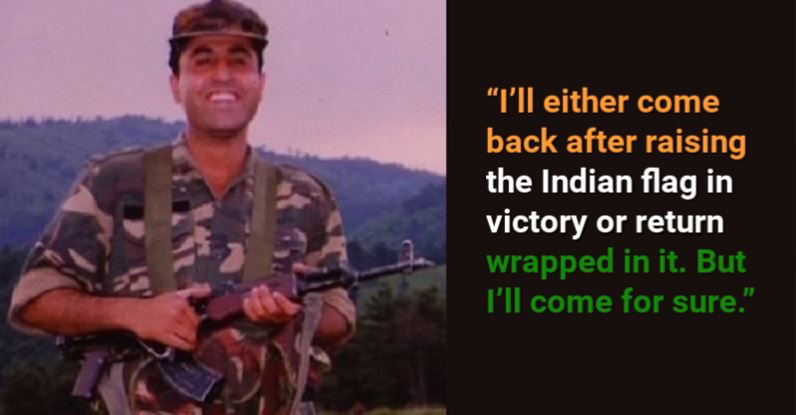
Late Captain Vikram Batra, fondly known as Sher Shah of Kargil who became a legend and epitome of inspiration for our brave soldiers. Most of you reading this article must have been in your early years of childhood when Kargil war was fought between India and Pakistan in 1999. But most of you must be familiar or ever have come across the name Captain Vikram Batra. Not only should every patriot know his name but should also be aware about the life of Late Captain Vikram Batra. Vikram sacrificed himself for protecting his beloved motherland amidst the insurgency of Pakistani troops in Kargil in 1999.
Early days of Vikram Batra’s life
Captain Vikram Batra was born on September 9, 1979 in Himachal Pradesh. Vikram spent his childhood in the mountain town of Palampur. He was the elder of the twin sons, born only fourteen minutes before his brother Vishal. The twins were nicknamed: ‘Luv’ (Vikram) and ‘Kush’ (Vishal), after the twin sons of Lord Rama. He was the third child of Girdhari Lal Batra, a government school principal and Kamal Kant, a school teacher. Vikram had two sisters named Seema and Nutan.
ADVERTISEMENT
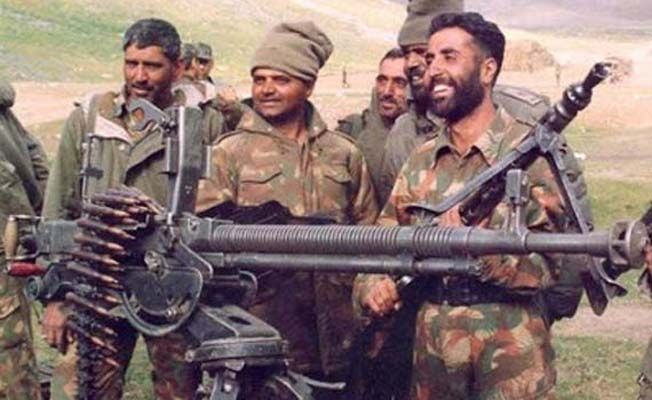
Vikram received his primary education from his mother. Then he went to D.A.V. Public School in Palampur, and further completed his senior secondary education from Central School, Palampur. He was a versatile student during his schooldays, possessing various skill sets. He represented his school and college in Karate, table tennis and many other games. He was sincere in studies, an enthusiastic sportsman and an avid participant in co-curricular activities. In short Vikaram was an all-rounder.
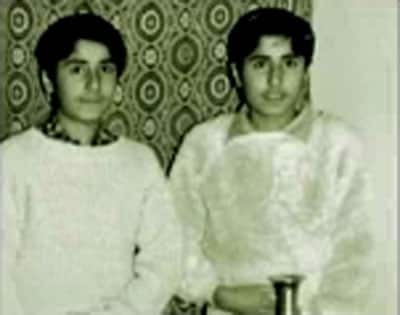
Had patriotic feelings from a very tender age
After passing his class 12th board with 82% marks Vikram went on to study B.Sc Medical Sciences from DAV College, Chandigarh. He joined NCC (National Cadet Corps) Air Wing in the first year. In the next two years of college, Vikram remained a cadet of the Army Wing of NCC. He got qualified for the ‘C’ certificate in the NCC and attained the rank of Senior Under Officer in his NCC unit. In 1994, Vikram was selected to to take part in Republic Day parade as a NCC cadet, and after attending the event when Vikram returned to his home, he told his parents that he wanted to join the Army.
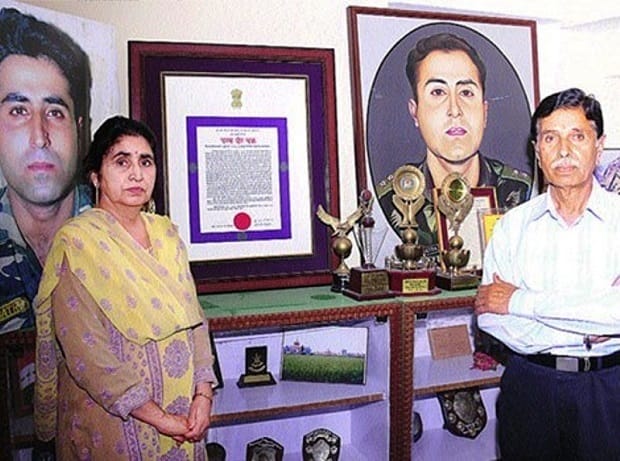
Vikram was keen on joining Indian Army. After completing his Bachelor’s degree in 1995, he prepared for Combined Defence Services (CDS) examination and also enrolled himself at Panjab University in Chandigarh, where he took admission in MA English. He attended evening classes at the University and also did part-time work in a travel agency in Chandigarh. Vikram told his father that “I do not want to be a burden on you, dad”. In the pursuit of his passion to serve the nation, he cleared the CDS examination with flying colours in 1996. Amidst this Vikram also declined a merchant navy job by a Hong-Kong based firm. Vikram said his mother that,
“Money is not everything in life; I have to do something bigger in life, something great, something extraordinary, for my country.”
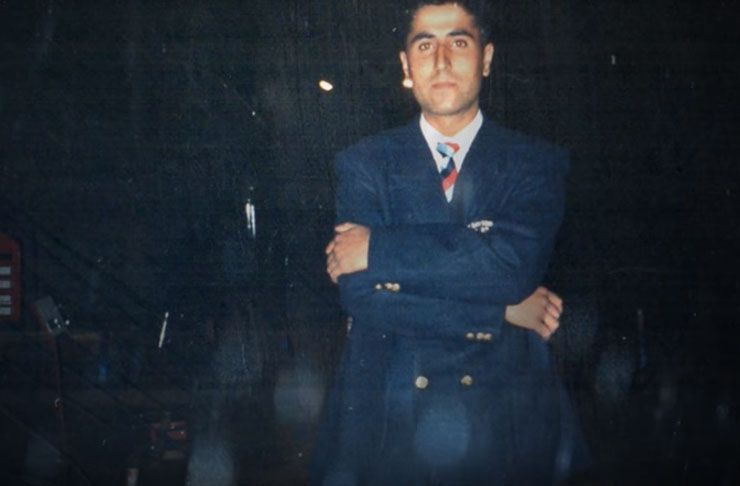
Vikram Batra’s military career
In 1996 Vikram joined the Indian Military Academy (IMA) at Dehradun in June 1996 in the Manekshaw Battalion. After completing his training he was commissioned as a Lieutenant into the 13th battalion, Jammu and Kashmir Rifles . His first posting was in the town of Sapore in Jammu and Kashmir’s Baramulla district.
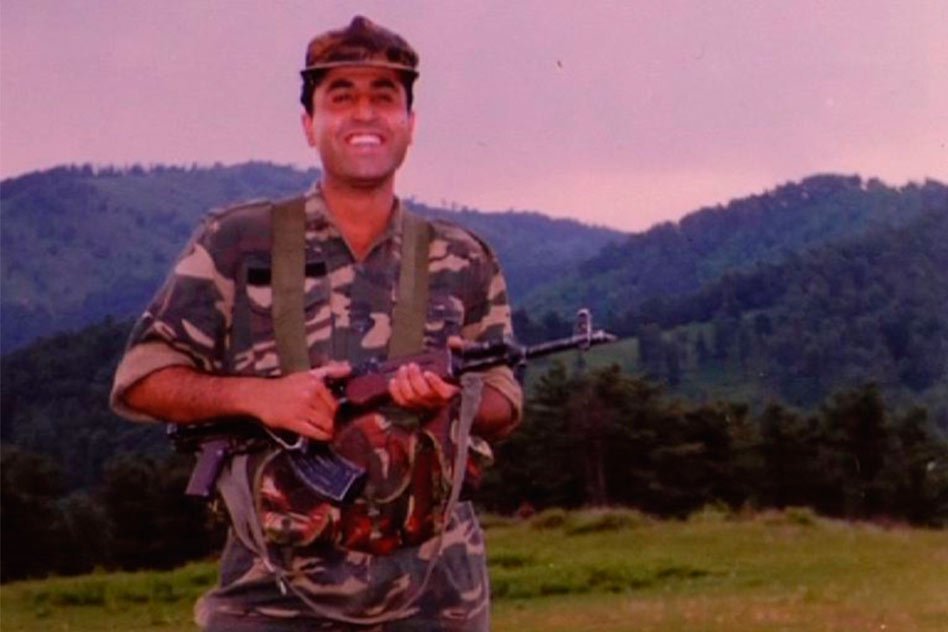
Vikram has multiple encounters with militants in the area. Everytime Batra came his home town to Palampur on leave, he would visit Neugal Cafe. Last time he came home on leave from the army was in 1999, during Holi. Then he met his best friend and his fiancee Dimple Cheema who told him to be careful in the war, to which Vikram replied:
“I’ll either come back after raising the Indian flag in victory or return wrapped in it. But I’ll come for sure.”
After his short leave Vikram joined his battalion in Sopore. On 5th June, after the outrbreak of Kargil War, Barta’s deployment were changed to Dras, Jammu and Kahmir. Durinh war he used to call his parents atleast once in ten days. The last phone call he made was on 29 June 1999, to he said to his mother “Mummy, ek dum fit hoon, fikar mat karna”. The last time when Vikram spoke to his mother.
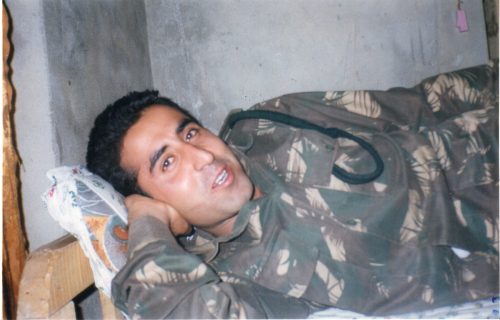
The Kargil War
During the Kargil War, on June 19, 1999, under the command of Lt. Vikram Batra, the Indian army snatched point 5140 from right under the enemy’s nose. After the capture of Point 5140, Vikram was promoted to the rank of captain.
One from my album for all time to come. With #VikramBatra enjoying a laugh-he would throw back his head & laugh khule dil se-huddled in a tent right after a successful operation. Little did we know that day, as he told me, “Yeh Dil Maange More”, that his next would be his last pic.twitter.com/LjOT0ZENQr — barkha dutt (@BDUTT) 7. juli 2019
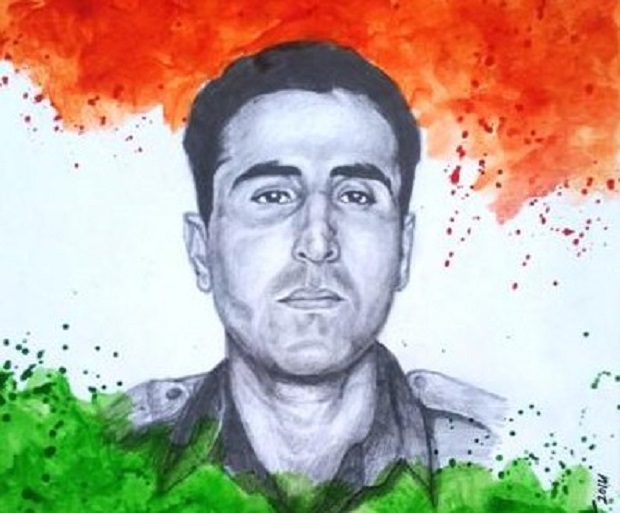
Vikram Batra Dimple Cheema love story is heart wrenching
There is one emotional side to the glorified life of Captain Vikram Batra. Dimple Cheema was Vikram’s love interest during his college days and he had plans to marry her once he came back from war but he never did. Captain Vikram Batra would have been the General of Indian Army Staff, had he returned from the Kargil War. The two met at Punjab University in 1995 where both of them were enrolled in M.A. English.
Vikram soon left the university when he got selected in Indian Military Academy but distance made their hearts grow fonder and stronger with time. The pressure of marriage was heavy and they both knew they were meant for each other. When Dimple grew restless because of the pressure of getting married, Vikram in truly filmy style took out his blade, slashed his thumb and used it as a sindoor to fill her ‘maang’. It is the rigorous exposers to battlefield that makes the Army men value love even more.
Though fate played a cruel role in their in their love story. This wasn’t the end of Dimple and Vikram’s love story. Dimple has kept Vikram’s memory alive by preserving all his letters and gifts as token of his love. She chose not to marry and takes pride in what Vikram did for his country. Dimple says not a single day in the past 18 years has she ever felt detached from him. She expresses how his love has shaped her life and will stay with her forever and ever.
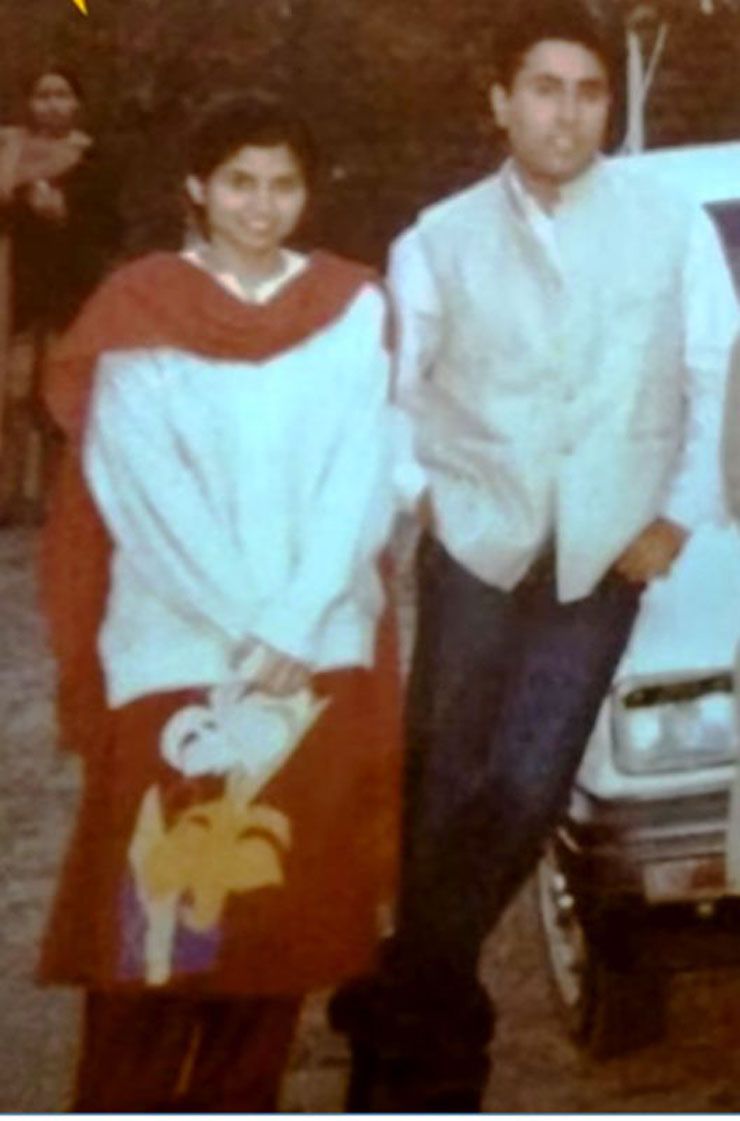
Awards and honors
Captain Vikram Batra was posthumously awarded the Param Vir Chakra. As his signal to communicate the success of his missions, he was also well known for using the slogan “Yeh Dil Maange More”. In his remembrance, Captain Batra’s name is used by the Army for various constructions and cantonments. The historic capture of Point 4875 led to the mountain being named Batra Top in his honour. The combined cadet mess at the IMA is named “Vikram Batra Mess”.
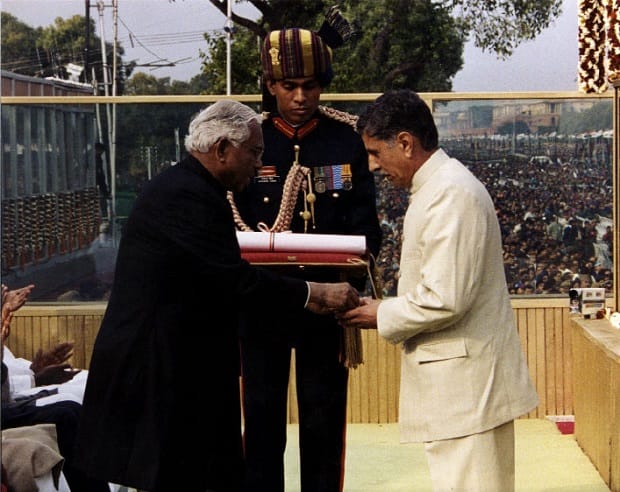
Tribute from Bollywood
2003 movie LOC Kargil was made as a tribute to the soldiers of Kargil War. Reportedly Abhishek Bacchan played the role of Captain Vikram Batra. In an upcoming biopic of Captain Vikaram Batra, Siddharth Malhotra will be seen playing the lead role. Not all heroes get a happy life but indeed that is the price a hero pays to become a hero.
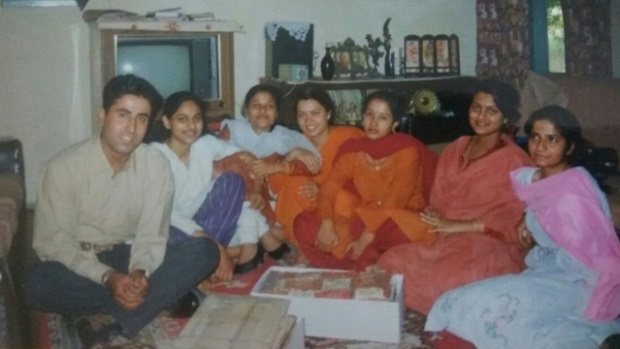
Every year on July 26 we celebrate “Kargil Vijay Diwas” and pay homage to our brave heroes who sacrificed themselves for keeping us safe. In Kargil War India achieved victory over Pakistan in a decisive and gritty battle. It was all possible due to the contribution of numerous brave hearts. Among these many brave hearts was a man who went to become the face of many young Indian soldiers who sacrificed their lives fighting ferociously and dying fearlessly.
RELATED ARTICLES MORE FROM AUTHOR
11 facts about mexican model grecia munoz, zomato ceo deepinder goyal’s second wife, inspiring story of balbanka tiwari, from earning ₹50 as a factory worker to an army officer, arvind kejriwal’s net worth is more than that of pm modi. lavish bungalow, curtains worth lakhs, meet radhika merchant father, viren merchant, & know about his business, kapil sharma net worth one of the richest comedians in india, elvish yadav net worth, luxurious lifestyle, cars, assets, panchayat 3 cast salaries: how much jitendra kumar, neena gupta, and..., natasa stankovic’s love affairs before she married hardik pandya, top 5 trends that will reshape the cre market in india..., here’s a look into hardik pandya’s net worth and his luxury..., railway responds after passenger shares that ticketless people flooded 3ac coach....
- Privacy Policy
- Terms Of Service
- Editorial Policy

Embarking on a transformative journey through six chapters, we traverse India's landscape, exploring pioneering startups and their revolutionary...
- Sustainability
- Agriculture
- Brand Campaigns
- Watch inspiring videos
- Advertise With Us
- Press Coverage
Follow Us On
Download App
Sher Shah of Kargil: The Story of Indian Army Legend, Captain Vikram Batra
Actor Siddharth Malhotra will be portraying the role of Captain Vikram Batra, the legendary Sher Shah of Kargil, in an upcoming biopic.

“Our flag does not fly because the wind moves it, it flies with the last breath of each soldier who died protecting it.” – Author Unknown
O n July 26, 1999, the Indian Armed Forces won a gritty and decisive war against Pakistan. In the ferocious battle, many brave young soldiers laid down their lives defending their nation on the inhospitable battlefield of Kargil.
It’s been more than eighteen years since then, but the unparalleled courage and sacrifice of Kargil heroes are still etched in the collective memory of the country. Among these many bravehearts was a man who would become the face of every young Indian soldier who fought ferociously and died fearlessly.
This is the story of Param Vir Chakra Vikram Batra, the unbelievably courageous soldier whose actions in the battlefield transcended heroism.
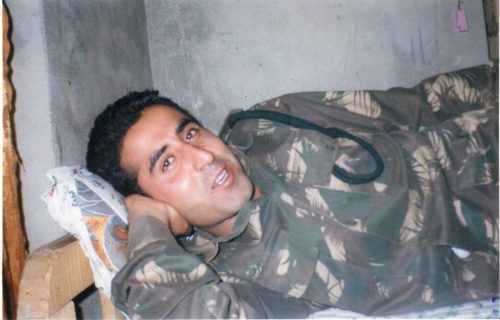
Photo Source
Born on September 9, 1974, in Himachal Pradesh, Vikram Batra spent his childhood in the beautiful mountain town of Palampur. The elder of twin sons ( he was born 14 minutes before his brother Viahal), he was the third child of Girdhari Lal Batra, a government school principal, and Kamal Kant, a school teacher.
Immensely popular among his classmates and teachers, Vikram was an all-rounder at school — brilliant at studies, he was also a keen sportsman and avid participant in co-curricular activities. Adjudged the best NCC cadet of north India, he was also a green belt holder in karate and played table tennis at national level.
Deeply patriotic from a young age, Vikram was always keen on joining the Army. So it was no surprise to his family when he decided to prepare for Combined Defense Services (CDS) examination after completing his Bachelor’s degree in 1995. Interestingly, he had been selected for a job in the merchant navy by a Hong Kong based firm but he ultimately changed his mind, telling his mother,
“Money is not everything in life; I have to do something bigger in life, something great, something extraordinary, for my country.”
A decade later, his decision would be paid a tribute in an Indian Oil print campaign that lauded him for rejecting a lucrative career for the service of the nation.
“Sometimes an ordinary Indian can make a Rs 120,000 crore company feel humble. For every step we take, there’s an inspired Indian leading the way”, read IOC’s ad copy, alongside a etched black-and-white image of Captain Batra.
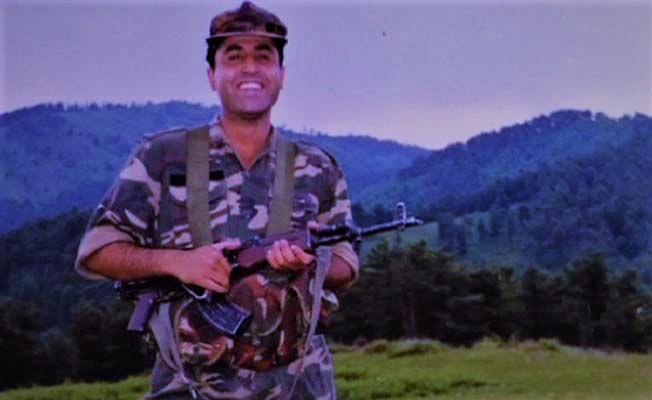
In 1996, his dream was fulfilled when he cleared the CDS examination with flying colours and joined the Indian Military Academy where he was commissioned as a lieutenant. His first posting was in the town of Sapore in Jammu and Kashmir’s Baramulla district.
In 1999, when Kargil War broke out, Vikram had just completed a Commando Course at Belgaum and got leave to celebrate Holi with his family at his home Palampur. Like he always did when he returned home, he headed to Neugal Cafe (a local riverside eatery) for a cup of coffee with his friend.
“The war has begun, who knows when you will be asked to go, you better be careful.” “Don’t worry. I’ll either come back after raising the Indian flag in victory or return wrapped in it, but I will come for sure”, was Vikram’s reply to his friend’s concerned words.
Soon after, Vikram’s unit received orders to move to Kargil and he reported for duty on June 1, 1999. Eighteen days later, on June 19, 1999, he was ordered to recapture Point 5140 in his first major battle in the war.
In spite of the enemy having the advantage of height, Vikram and his men led a brilliant tactical assault on the enemy. The enemy camp was routed, their soldiers killed and 13 J&K Rifles won a decisive victory that strengthened India’s hold on the territory (and would later lead to the fall of Tiger Hill, and to India’s eventual victory).
Elated that all his men had made it alive, Vikram famously told his commander at the base — “Ye Dil Maange More” — using the popular slogan of Pepsi’s ad campaign to express his desire to do more. The photo of the young captain, laughing besides an anti-aircraft gun snatched from Pakistani soldiers, also went on to become the most enduring image of India’s first televised war.
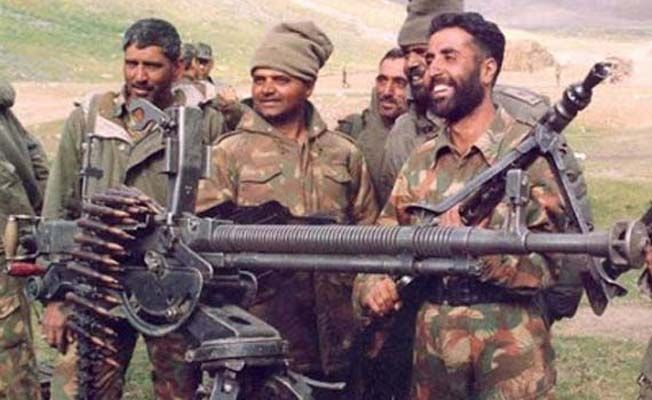
Vikram’s father will never forget the phone call he got on the morning of June 20. It took him a while to understand his son’s unclear words, crackling through a satellite phone.
“Daddy, I’ve captured the enemy’s post. I’m OK, I’m OK.” “ Beta, I’m proud of you. May God bless you to carry on your task”, replied the relieved father, reveling in the accomplishment of his brave son who had lived up to his name.
Nine days later, Vikram called from base camp before leaving for another crucial operation. He told his worried parents, “ Ek dum fit hoon, fikar mat karna (I’m absolutely fine. Don’t you worry.)”. That was the last time he spoke to them.
Vikram’s next operation was one of the most difficult mountain warfare campaigns undertaken during Kargil – the capture of the 17000 feet high Point 4875. The icy slopes of this peak were 80 degree steep (made even more precarious by the thick fog) and Pakistani troops had positioned themselves at the height of 16000 feet.

On the night of July 7, Vikram and his men began their tortuous climb to fortify the Indian force which was already fighting the invaders at 16,000 feet. The enemy got wind that the formidable Sher Shah (Vikram’s code name) had arrived and and intensified their attack, raining mortar and automatic fire from above. They knew who Sher Shah was — by then, the young captain’s military prowess had become the stuff of legend on both sides.
Vikram counter-attacked ferociously, supported ably by his friend and fellow officer, Anuj Nayyar, Engaging in hand-to-hand combat, clearing enemy bunkers and egging their men forward, the two bravehearts forced the shocked enemy to retreat.
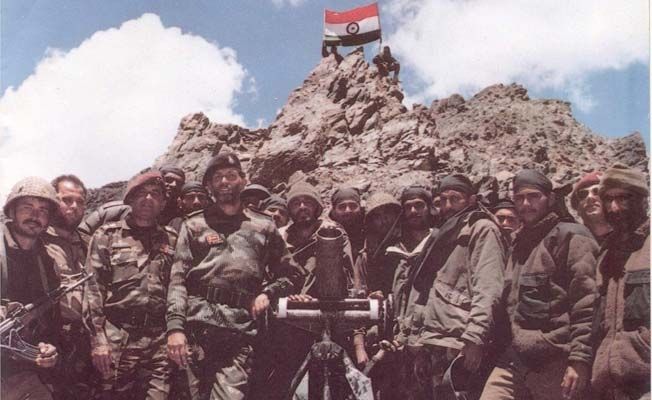
The mission was almost over when a junior officer injured his legs in an explosion. As Vikram rushed out of the bunker to rescue him, his subedar begged him not to go and said he would go instead. But Vikram told him: “ Tu baal-bacchedar hain, hat ja peeche.” ( You have children, step aside)”.
Under heavy fire, he hurled grenades at the enemy’s machine gun post and killed five soldiers in close combat while moving towards the injured lieutenant. He had just reached and was lunging to lift his mate when he was hit by a bullet in his chest.
Mortally wounded, Vikram passed way after completing the mission in a manner that etched his name him alongside some of India’s greatest military heroes. His comrade in battle, Captain Anuj Nayyar, had also died while clearing enemy bunkers. By morning, India had recaptured Peak 4875 (now called Vikram Batra Top) but lost two of her bravest sons.
At Vikram’s funeral, his grief-stricken mother said, “Maybe there was a reason why God gave me twins — one he had marked for the country and one for me.”

Today, a statue of her son adorns the town square of Palampur, across the statue of another legendary soldier — Major Somnath Sharma, India’s first Param Vir Chakra awardee, who also belonged to Palampur.
“The enemy is only 50 yards from us. We are heavily outnumbered. We are under devastating fire. I shall not withdraw an inch but will fight to the last man and the last round”, said Major Sharma, before he laid down his life battling enemy raiders during the Indo-Pak war of 1947.
His towering legacy couldn’t have found a worthier successor than Captain Vikram Batra, the swashbuckling soldier who gave a nation its war cry and a generation of youngsters their motto.
For his sustained display of the most conspicuous personal bravery and leadership of the highest order in the face of the enemy, Captain Vikram Batra was posthumously awarded Param Vir Chakra — India’s highest award for gallantry in battle. Captain Anuj Nayyar was awarded the Maha Vir Chakra — the nation’s second highest honour.
Also Read : The Little Known Story of Major Somnath Sharma, India’s First Param Vir Chakra Recipient
Like this story? Or have something to share? Write to us: [email protected] , or connect with us on Facebook and Twitter . NEW: Click here to get positive news on WhatsApp!
If you found our stories insightful, informative, or even just enjoyable, we invite you to consider making a voluntary payment to support the work we do at The Better India. Your contribution helps us continue producing quality content that educates, inspires, and drives positive change.
Choose one of the payment options below for your contribution-
By paying for the stories you value, you directly contribute to sustaining our efforts focused on making a difference in the world. Together, let’s ensure that impactful stories continue to be told and shared, enriching lives and communities alike.
Thank you for your support. Here are some frequently asked questions you might find helpful to know why you are contributing?

Sounds Interesting? Share it now!
This story made me
Tell Us More

- Ground Reports
- 50-Word Edit
- National Interest
- Campus Voice
- Security Code
- Off The Cuff
- Democracy Wall
- Around Town
- PastForward
- In Pictures
- Last Laughs
- ThePrint Essential

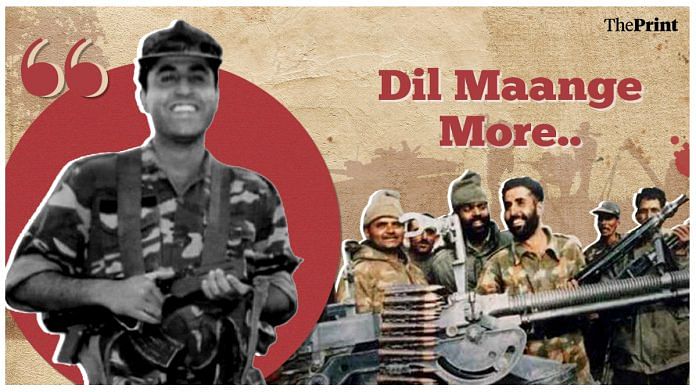
New Delhi: Ye Dil Mange More — when this slogan from a Pepsi commercial echoed in Kargil’s mountains, it inspired a few men and changed the course of the conflict between India and Pakistan. It was Captain Vikram Batra who made it a war cry. In Param Vir: Our Heroes in Battle , Ian Cardozo details how Batra marked the successful recapture of Tololing Ridge’s Point 5140 mountain by saying, “ Ye Dil Maange More !”.
“One of the Pakistani Army soldiers told me that my codename was ‘Shershaah’ and said ‘Oh Shershaah, you have come, [but] don’t try to come up otherwise you will have a tough time!’ My guys went wild, because how dare a Pakistani troop challenge us,” a jubilant Captain Vikram Batra had told NDTV’s Barkha Dutt at an Army camp in Kargil about his newfound nickname, known on both sides of the border, during the conflict in July 1999.
Days after this interview, Captain Batra was killed in action by Pakistani forces while trying to take a fellow soldier to safety on 7 July and was posthumously awarded the Param Vir Chakra.
23 years on, Captain Batra has been immortalised in military history, for his bravery due to the crucial role he played in India’s eventual victory at Kargil.
Also read: ‘Yeh Dil Maange More’ – The Pepsi slogan now synonymous with Kargil braveheart Vikram Batra
Batra: the karate kid
Born on 9 September 1974, Batra hailed from Palampur, a hill station in Himachal Pradesh’s Kangra Valley. He completed his schooling there, showing proficiency in karate and table tennis, the latter of which he played for his school at the national level alongside his twin brother, Vishal.
Batra then went to Panjab University’s affiliate DAV College in Chandigarh for higher education. Following in his grandfather’s footsteps, he joined the National Cadet Corps’ (NCC) Air Wing.
Batra spent the entirety of his undergraduate years in the NCC’s Air Wing and was on the brink of joining the merchant navy in Hong Kong, having been selected with “his uniform stitched and tickets booked”.
But he made a U-turn for he had a slightly altered career goal in mind and money was no longer the highest priority, according to his father, G.L. Batra. “He was selected for the merchant navy and had almost joined it. But something made him change his mind. He told me he was not after money. He wanted to do something extraordinary that would bring fame to his country,” G.L. Batra told Rediff in 2000.
Vikram Batra, while preparing for the Combined Defence Services Examination (CDSE), simultaneously enrolled for a Master’s in English after completing his undergrad in 1995. He also worked part-time as a branch manager for a travel agency in Chandigarh to support himself.
Upon clearing the CDSE in 1996, he left for Dehradun’s Indian Military Academy, training for 18 months before he was commissioned as a Lieutenant to the 13th battalion of the Jammu and Kashmir Rifles. J&K’s militant-targeted Sopore district was his first posting with the battalion in 1998.
Batra’s first brush with death on duty came during his Sopore posting when a militant’s bullet grazed him but killed a soldier of his platoon right behind him, leading Batra to believe that he was the intended target.
Also read: ‘Soldiers and I are expendable, India’s reputation is not’ – How Sam Manekshaw rose to the top
The final call
The Kargil conflict had begun in May 1999 with Pakistani paramilitary and armed forces infiltrating the Line of Control and taking up key positions in the mountainous district, around the likes of Dras and Mushkoh Valley.
The 13 Jammu and Kashmir Rifles did not get involved in the conflict until their arrival in Dras on 6 June, the day the Indian Army was to embark on a significant counteroffensive to retake territory overrun by Pakistani troops, such as Tololing.
While Batra, then a Lieutenant, and his battalion primarily acted as a reserve force at Dras and Tololing, their responsibilities escalated later in June with the recapture of Tololing Ridge’s Point 5140 mountain.
Although he sustained injuries, Batra’s tenacity and tactical acumen was said to be a deciding factor in India’s successful recapture, as his decision to attack the Pakistani troops “from the rear” led him to kill multiple soldiers in close combat, single-handedly.
The J&K battalion’s subsequent assignment in early July was to recapture the nearby Mushkoh Valley’s Point 4875 from the Pakistanis. The arrival of Batra — ‘Shershaah’ as soldiers on both sides of the border knew him as on radio — was reportedly a major morale boost for the Indian soldiers around the Mushkoh Valley.
However, several days of skirmishes between the Indians and Pakistanis across the harsh terrain ultimately resulted in Batra being killed in action. He was shot in the chest by a sniper and in the head by a rocket-propelled grenade (RPG) splinter while trying to evacuate a fellow injured soldier.
India recaptured the lost territory and regained the LOC status quo on 26 July 1999, nearly three weeks after Batra’s death. But due to his actions during the battalion’s assignments, as well as his signature slogan aired both on Army radio and on NDTV , Batra became the face of the Kargil conflict.
(Edited by Anurag Chaubey)
Subscribe to our channels on YouTube , Telegram & WhatsApp
Support Our Journalism
India needs fair, non-hyphenated and questioning journalism, packed with on-ground reporting. ThePrint – with exceptional reporters, columnists and editors – is doing just that.
Sustaining this needs support from wonderful readers like you.
Whether you live in India or overseas, you can take a paid subscription by clicking here .
- Kargil Diwas
- Vikram Batra
LEAVE A REPLY Cancel
Save my name, email, and website in this browser for the next time I comment.
Most Popular
The ist story—how indian railways, and sardar patel, helped synchronise india’s clocks, granted indian citizenship under caa, hindu migrants from pakistan embrace ticket to ‘freedom’, rss-bjp separation is official now. it’s been a long time coming under modi decade.
Required fields are marked *
Copyright © 2024 Printline Media Pvt. Ltd. All rights reserved.
- Terms of Use
- Privacy Policy
- Skip to Main Content
- Screen Reader Access
- English हिन्दी অসমীয়া বাংলা Garo ગુજરાતી ಕನ್ನಡ कश्मीरी / كشميري Khasi कोंकणी മലയാളം ইমার ঠার मराठी Mizo Nagamese नेपाली ଓଡ଼ିଆ ਪੰਜਾਬੀ தமிழ் తెలుగు اُردُو हिन्दी -->
- Search Search

Param Yodha

Param Vir Chakra (Posthumous) 07 Jul. 1999
Captain vikram batra.
During Operation Vijay, Captain Vikram Batra of 13 JAK RIF, was tasked to capture Point 5140. Leading from the front, in a daring assault, he killed four enemy troops in close combat battle. On 07 July 1999, his company was tasked to capture a feature on Point 4875. In a fierce hand-to-hand fight, he killed five enemy soldiers. Despite sustaining grave injuries, he led his men from the front and pressed on the attack, achieving virtually impossible task in the face of heavy enemy fire, before attaining martyrdom. Inspired by his courageous act, his troops annihilated the enemy and captured Point 4875. For exhibiting an act of conspicuous gallantry, inspiring leadership, indomitable courage and supreme sacrifice, he was awarded the Param Vir Chakra (Posthumous).
Audio Clips

Explore Murals

Battle of Longewala
The Battle of Longewala was one of the major decisive battles fought on the Western sector during the India - Pakistan War of 1971. On the night of 04/05 Dec 19....

Battle of Gangasagar
The Battle of Gangasagar was one of the most fiercely fought battles in then East Pakistan during India - Pakistan War of 1971. 14 GUARDS was given the task of ....

Battle of Tithwal
The Battle of Tithwal was one of the fiercest and longest battles fought during India - Pakistan conflict in 1947-48. During initial stages, Pashtun tribal mili....
- Bihar Board
RBSE 10th Result 2024
Cfa institute, srm university.
- Rajasthan 10th Result
- Rajasthan Board Result
- Shiv Khera Special
- Education News
- Web Stories
- Current Affairs
- School & Boards
- College Admission
- Govt Jobs Alert & Prep
- GK & Aptitude
- general knowledge
Shershaah - Captain Vikram Batra Biography: Birth, Early Life, Family, Education, Military Career, Award, Kargil War and Martyrdom
Pvc awardee captain vikram batra was martyred during the kargil war in 1999 (between india and pakistan). shershaah, a film tracing his life journey will be released on amazon prime video on 12 august 2021. it is directed by vishnu varadhan and produced by dharma productions and kaash entertainment. .

Captain Vikram Batra was an awardee of Param Vir Chakra posthumously-- India's highest and most prestigious award for his martyrdom during the Kargil War in 1999 (between India and Pakistan). Shershaah, an upcoming Bollywood movie starring Sidharth Malhotra and Kiara Advani traces the life journey of PVC awardee and Army Captain Vikram Batra. The movie is directed by Vishnu Varadhan and produced by Dharma Productions and Kaash Entertainment.
With love, pride and happiness in our hearts, we bring you the story of #ShershaahOnPrime ❤️ starring @SidMalhotra and @advani_kiara , directed by @vishnu_dir Releasing on 12th August 🇮🇳 pic.twitter.com/LwVLRj2kw7 — amazon prime video IN (@PrimeVideoIN) July 15, 2021
Captain Vikram Batra: Birth, Family and Education
Captain Vikram Batra was born on September 9, 1974, in Palampur, Himachal Pradesh to Girdhari Lal Batra (Father) and Kamal Kanta Batra (Mother). His father Girdhari Lal Batra was a government school principal while his mother was a school teacher.
Captain Vikram Batra attended DAV Public School in Palampur. He then got himself admitted at Central School to receive senior secondary education. In the year 1990, he along with his brother represented the school in Table Tennis at All India KVS Nationals.
Captain Vikram Batra was a green belt in Karate and attended the sport at the national level camp in Manali.
He was a graduate in B.Sc. Medical Sciences from DAV College. During his college days, Captain Vikram Batra joined NCC's, Air Wing. In the Inter-State NCC Camp, he has adjudged the best NCC Air Wing cadet of Punjab Directorate in the North Zone.
Captain Vikram Batra was selected for a 40-day training at Pinjore Airfield and Flying Club with his NCC Air Wing unit.
Captain Vikram Batra qualified for the 'C' certificate and was given the rank of Captain Vikram Batra in NCC.
In 1994, he did the Republic Day parade as an NCC cadet and the following day told his parents his desire to join the Indian Army. During his college days in 1995, he was selected for the merchant navy with a shipping company headquartered in Hong Kong but changed his mind.
After completing his graduation from DAV College, Chandigarh in 1995, he enrolled at Panjab University, Chandigarh to pursue an MA in English. He chose the subject to prepare for Combined Defence Services (CDS) Examination.
He took the evening classes there and during the day worked as a branch manager of a travelling agency in Chandigarh.
Captain Vikram Batra: Military Career
In June 1996, Captain Vikram Batra joined IMA in the Manekshaw Battalion. On December 6, 1997, he graduated from the IMA, after completing his 19-month training. He was then commissioned as a lieutenant into the 13th battalion, Jammu and Kashmir Rifles. He was sent to Jabalpur and Madhya Pradesh for further training that lasted for a month.
Post his training, he was posted to Sopore in Baramulla district, Jammu and Kashmir. The area had significant militant activity. In March 1998, he was sent to Mhow, Madhya Pradesh for five months, in an Infantry School, to complete Young Officer's Course. Upon completion, he was awarded alpha grading and rejoined his battalion in Jammu and Kashmir.
In January 1999, he was sent to complete two months Commando Course at Belgaum, Karnataka. Upon completion, he was awarded the highest grading-- Instructor's Grade.
Before his martyrdom during the Kargil War, he visited his home on leave from the Army during the Holi festival in 1999. He mostly visited Neugal Cafe whenever he visited his hometown. This time too, he visited the cafe and met his best friend and fiancee Dimple Cheema. Dimple asked her to be careful in the war to which he replied, 'I'll either come back after raising the Indian flag in victory or return wrapped in it. But I'll come back for sure.'
Captain Vikram Batra: Kargil War and Martyrdom
After the 13 JAK RIF battalion reached Dras on June 6, it was placed under the command of 56 Mountain Brigade and was given orders to act as reserves to the 2nd battalion-- Rajputana Rifles(2 RAJ RIF)-- during the attack on Tololing mountain.
The 18 Grenadiers battalion was given the order to capture mountain Tololing. The battalion attacked the mountain on May 22, but was unsuccessful even after four attempts and suffered heavy casualties. Amid this, Rajputana Rifles was assigned the task and they successfully captured the peak of the mountain on June 13, 1999. After its successful capture, 13 JAK RIF took over Tololing mountain and a portion of the Hump Complex from 18 Grenadiers.
The capture of Point 5140
This point is the highest point on the Tololing range at an altitude of 16,962 feet above sea level and overlooks the Tololing nullah. Between the Tololing mountain and point 5140, lies the Hump Complex having ten grounds numbered from I to X and Rocky Knob. The 18 Grenadiers proceeded to capture Humps I-VIII while 13 JAK RIF then took Humps IX, X and Rocky Knob.
After the Tololing mission was completed, the then commanding officer, now Lt. Col. Yogesh Kumar Joshi, planned an assault on Point 5140 before dawn, else the battalion will suffer maximum casualties.
Joshi ordered B Coy to attack Point 5140 under the command of Lt. Sanjeev Singh Jamwal, and D Coy, under the command of Lt. Vikram Batra, from two sides-- east and south. At the Hump Complex, Jamwal and Batra were given the orders directly by Joshi. Jamwal chose 'Oh! Yeah, yeah, yeah!' while Batra chose 'Yeh Dil Mange More!' as their success signal. D-Day was June 19 and H-Hour was at 20:30.
It was planned that the assault groups will climb Point 5140 after midnight on June 20 under the cover of artillery fire. The guns would stop firing once the troops were 200 m short of their target.
As planned, the Indian side started to cease firing and Pakistani soldiers immediately came out of their bunkers and did heavy firing with their machine guns on the advancing troops. Amid this, both Jamwal and Batra at Hump Complex contacted the base and asked to continue artillery bombardment of the enemy positions till the companies were 100 metres short of their target.
At 3:15 hours, both the troops (B and D coys) reached Point 5140 and by 3:30 hours, B Coy marked its victory as Jamwal send his victory signal over the radio.
Meanwhile, Batra decided to reach the hill from the rear to surprise the enemy and to block their withdrawal route. Before attacking the enemy, Batra fired three rockets towards the bunkers. As he along with others advanced to the top, the enemy pinned them with machine gunfire. Batra hurled two grenades at the machine gun post and reached the top. He killed three enemies in close combat single-handedly but was seriously injured in the process. Despite injuries, he charged the next enemy position and captured point 5140. At 4:35 hours, he sent his victory signal over the radio.
There was no casualty and no soldier died in the operation at Point 5140, Point 4700, Junction Peak and the Three Pimple Complex. After Point 5140, Batra was promoted to the rank of Captain. On June 26, the battalion received orders to move from Dras to Ghurmi to rest. On June 30, the battalion moved to Mushkoh Valley.
The capture of Point 4875
After reaching Mushkoh Valley, the 13 JAK RIF was placed under the command of the 79 Mountain Brigade. The next target was to capture Point 4875. The target was dominated by National Highway 1 and thus it was imperative for the Indian Army to capture it as the Pakistani Army could easily see its gun positions, army camps and troop movements.
A plan was carried out to capture Point 4875. 13 JAK RIF was deployed to a fire support base, 1500 m away from the target point. On July 4, at 18:00 hours, the Indian Army started bombarding enemy posts on Point 4875 and continued non-stop firing throughout the night. At 20:30, under the artillery fire cover, A and C coys advanced towards the destined point. Batra was at the time lying in a sleeping bag as he was unwell.
Both the troops advanced towards the target and were 50 m short by the first light. At 4:30 hours, the troops began firing at enemy positions at the top of the feature. On July 5, at around 10:15 hours, Joshi fired two Fagot missiles which directly hit the base of the enemy soldiers and provided a cover to the advancing troops. At 13:00 hours, the A and C Coys captured Point 4875 but continued receiving artillery and machine-gun fire from Pimple 2 and areas north of Point 4875.
At 22:00 hours, the Pakistani Army heavily fired at the A and C Coy. In the morning at 4:45 hours, C Coy reported heavy firefight and the need for ammunition which the B Coy brought up to help them continue their firefight. On July 5, after a battle with the enemy, the Indian Army captured Area Flat Top.
Young Capt. N.A. Nagappa was holding Flat Top with a small force. All of sudden, a shell hit the area and pierced through both the leg of Capt. Nagappa. Taking advantage of the situation, the Pakistani Army advanced faster. Batra was observing the situation from the fire support base and voluntarily asked Joshi to go to the Flat Top.
Despite strict rules, several soldiers pleaded for permission from their seniors to join Batra at the Area Flat Top. The soldiers were so moved by the determination of Batra, that they wanted to join him anyhow at the cost of being jailed or court-martialled.
Before leaving for the Area Flat Top, Batra along with 25 other men of D Coy prayed at the Temple. A wireless message was sent to the commanders at the top about Batra joining them. This was intercepted by the Pakistani side. Fearing Batra, they broke into the Indian wireless system to threaten him. However, Batra kept on climbing.
Indian soldiers were unaware of the presence of the Pakistani troops on the ledge ahead of the Twin Bump. The Indian troops destroyed the enemy bunkers at Peak 4875 but firing from the ledge pinned them down. While climbing, Batra noticed the enemy's machine-gun position firing at the trapped soldiers. He advanced towards the machine gun and destroyed it with a grenade.
On July 7, before the first light, the Indian troops destroyed two more enemy machine guns. However, the firing from the ledge continued. At 5:30 hours, he was commanded to recce the area. Batra located the position of the enemy sanagr on the ledge. At great personal risk and under heavy fire from the enemy, he along with other members advanced towards the sangar and charged with his AK-47. He continued his charge with other members despite several injuries and reached the narrow entrance of the sangar leaving the enemy in shock. In close combat, he killed 5 enemy soldiers. He killed another 4 members of the enemy troop who were operating machine gun nests.
Captain Vikram Batra: Movies
In 2013, the Bollywood movie LOC Kargil was released and was based on the entire Kargil conflict. Abhishek Bachchan played the role of Captain Vikram Batra in the movie.
Captain Vikram Batra: Legacy
1- The historic capture of Point 4875 led to the mountain being named Batra Top in his honour.
2- A residential area in the Jabalpur Cantonment is called 'Captain Vikram Batra Enclave'.
3- A hall at the Service Selection Centre Allahabad is named 'Vikram Batra Block'.
4- The combined cadet's mess at the IMA is named 'Vikram Batra Mess'.
5- A memorial for war veterans including Batra stands at DAV College, Chandigarh.
Captain Vikram Batra: Param Vir Chakra
Get here current GK and GK quiz questions in English and Hindi for India , World, Sports and Competitive exam preparation. Download the Jagran Josh Current Affairs App .
- Who said Ye Dil Maange More? + Captain Vikram Batra, the hero of the Kargil, chose an advertising slogan 'Ye Dil Maange More' and made it his life's motto.
- Who got Param Vir Chakra for Kargil? + Among Sanjay Kumar, Naib Subedar Yogendra Singh Yadav, Captain Manoj Kumar Pandey; Captain Vikram Batra was awarded Param Vir Chakra posthumously for his exemplary courage and acts of valour during the Kargil War in the year 1999.
- Is Captain Vikram Batra alive? + No, Captain Vikram Batra was martyred on July 7, 1999, during the Kargil War.
- How did Vikram Batra die? + Captain Vikram Batra was shot in the chest by an enemy sniper from a close range and in a blink of an eye by a splinter from an RPG, hitting him in the head, during the 1999 Kargil War.
- KKR vs SRH IPL Final 2024
- IPL 2024 Final
- T20 World Cup Teams and Sqauds
- India T20 World Cup Squad 2024
- IPL Winners List
- IPL 2024 Points Table
- Memorial Day 2024
- Orange Cap in IPL 2024
- RBSE 10th Result 2024 Date and Time
- Manipur HSLC Result 2024
- Personalities of India
- GK for State PSC
- GK for UPSC
- GK for Banking
Latest Education News
LIVE RBSE 10th Result 2024: आज शाम 5 बजे होगा जारी राजस्थान बोर्ड 10वीं का रिजल्ट, देखें Direct Link के साथ लेटेस्ट न्यूज
NCERT Book for Class 11 Sanskrit 2023 - 2024 All Chapters, PDF Download
CSJMU Result 2024 OUT at csjmu.ac.in; Download Kanpur University UG and PG Marksheet PDF
Kerala SSLC Revaluation Result 2024 Announced, Direct Link to Check at sslcexam.kerala.gov.in
JAC 8th Result 2024 Declared: 94% स्टूडेंट्स पास, Check Jharkhand Board Class 8 Results at jacresults.com, Download Marksheet Here with Roll Number
Maharashtra Board HSC Sociology Exam 2024: Exam Analysis and Question Paper 2024, Download PDF Here
CBSE Class 12th Physics Notes: Moving Charges and Magnetism (Part ‒ III)
KPSC Assistant Recruitment 2020: 1112 Vacancies Notified, Apply Online @kpsc.kar.nic.in by 6 March
CUC Result 2024 OUT on cuc.ac.in, Direct Link to Download Raja Shankarshah University PG Odd Semester Marksheet
RBSE 10th Result 2024 Link: राजस्थान बोर्ड के नतीजे सबसे जल्दी कैसे देखें और डाउनलोड करें अपनी मार्कशीट
Rajasthan JET Admit Card 2024 OUT: राजस्थान जेट एडमिट कार्ड jetauj2024.com पर जारी, यहां दिए लिंक से डाउनलोड करें हॉल टिकट
JAC 8th Result 2024 OUT: झारखंड बोर्ड 8वीं का रिजल्ट jacresults.com पर घोषित, तुरंत इस डायरेक्ट लिंक jac.jharkhand.gov.in से करें चेक
APPSC DEO Answer Key 2024 Out at psc.ap.gov.in: Here's Direct Link to Raise Objection
Rajasthan 10th Board Result 2024: When, Where, and How to Check BSER Ajmer Class 10 and Praveshika Results Online
Meghalaya Police Constable Recruitment 2024: Last Date Soon For 2968 Various Posts, Here's link to apply
RBSE 10th Result 2024: जारी होने वाला है राजस्थान बोर्ड 10वीं का रिजल्ट, इस आधिकारिक Website पर मिलेगा Direct Link
[Official] RBSE 10th Result 2024 Date and Time: Check Rajasthan Board 10th Class Notice Here!
RBSE Result 2024: राजस्थान बोर्ड रिजल्ट Link at Jagran Josh, rajeduboard.rajasthan.gov.in, rajresults.nic.in
RBSE 10th Result 2024: राजस्थान 10वीं रिजल्ट Link at Jagran Josh, rajeduboard.rajasthan.gov.in, rajresults.nic.in
Rajasthan Board 10th Result 2024 LIVE: BSER Ajmer Class 10 and Praveshika Results Online at rajeduboard.rajasthan.gov.in by Roll Number
- Sustainability
- Responsible Business
- Small Medium Business
- Pitch A Story

Picture Credit: Wikimedia , Wikimedia
Kargil War Hero! Gallant Officer 'Vikram Batra' Who Fought Bravely & Sacrificed His Life For India

Writer: Ronit Kumar Singh
Ronit kumar singh.
A confident and reliable journalist who always desires to toss the unheard voices. I cover politics and governance extensively through stories.
India, 7 July 2022 7:04 AM GMT
Editor : snehadri sarkar | .

Snehadri Sarkar
Digital Editor
While he is a massive sports fanatic, his interest also lies in mainstream news and nitpicking trending and less talked about everyday issues.
Creatives : Ronit Kumar Singh
Digital Journalist
Param Vir Chakra, Captain Vikram Batra achieved great success through his dedication and leadership quality at a young age in the Indian Army. The country lost the gallant officer on July 7, 1999, during the Kargil war.
A gallant officer of the Indian Army, Param Vir Chakra Vikram Batra, was born in a middle-class family in Ghuggar village near Palampur of Himachal Pradesh. Captain Batra was the third child of Kamal Kanta Batra, a teacher in a school, and G.L. Batra, a government school principal. His twin brother, Vishal, was born just fourteen minutes before him, and they were named 'Luv' (Vikram) and 'Kush' (Vishal). He achieved great success at a young age through his consistent dedication and leadership quality in the Indian Army.
Captain Batra's Introduction To Army
Capt. Vikram joined the Indian Military Academy, IMA in 1996 in the Manekshaw Battalion, where he completed his 19-moth extensive training. After he graduated from IMA in 1997, he was posted as a lieutenant in the Indian Army and soon commissioned into the 13th battalion of J&K Rifles (13 JAK Rif). After successful commissioning, Batra was sent to Madhya Pradesh for regimental training for one month from December 1997 to 1998 January.
Capt. Batra faced many encounters during his posting in the J&K, and he met all of them bravely. He was awarded the Param Vir Chakra, the highest military recognition of India, for his service in the Kargil war, 1999, where he sacrificed his life. He was martyred by the action of Pakistani troops around Point 4875 in Kargil on July 7, 1999.
'Yeh Dil Maange More'
After being posted as a lieutenant in the Indian Army, Batra was promoted to Captain during the Kargil war. On June 19, 1999, Captain Batra led the Delta Company, which was ordered to recapture the peak of 5140. The Pakistani troops were settled in the top peak, which made it challenging for the Delta company to recapture the area, reported News18 . But the Indian soldiers bravely climbed up the hill and market victory by recapturing peak 5140.
In the second mission, Captain Batra was sent to an 80 degrees steep and 17,000 feet high peak 4875 along with his men. On July 7, they camped, intending to recapture it and claim victory, but it was filled with challenges as weather conditions became unfavourable and the fog spread creating issues with long vision.
The Indian soldiers led by Captain Batra didn't give up and climbed the hill to claim victory. During this time, Batra ran in front of Pakistani troops to rescue an officer and got severely wounded by several rounds of firing. The Captain couldn't survive the injury, but India successfully recaptured the peak of 4875.
Also Read: Here's Why This Fastest Growing Tech-Hub 'Bengaluru' Ranked Least Livable City In India

We are an independent and public-spirited digital media platform for Indian millennials. We report news and issues that matter as well as give you the opportunity to take action.


The Inspiring Story – Legend Captain Vikram Batra!
As India Celebrates its 74th Independence Day Lets Remmber the Story of Legend Captain Vikram Batra!

“Ya to Tiranga lehrakar aunga ya to Tirange main lipta chala aunga, par aunga jaroor” (Either I will be back after hoisting the flag or I will be back wrapped in it, but I will come back for sure).
These words by Captain Vikram Batra aptly sum up the spirit with which the Indian Army lives, just like his life sums up the spirit of the bravehearts who fight at the border. It was with this exact spirit and attitude that he motivated the men of his own battalion to keep fighting during the Kargil War.
To know Captain Vikram Batra, we’ve got to know the young man’s story.
Throughout school, Vikram had been great at sports, playing table tennis and practicing karate with equal efficiency. In fact, he was also a great student who represented his school at Youth Parliament competitions in Delhi.
With this go-getter attitude, Vikram packed his bags to move to Chandigarh and get a degree in Medical Sciences. Throughout his college life, he remained a part of the Army Wing of National Cadet Corps. In fact, he got a chance to perform at the Republic Day parade because of it. It was his first glimpse of the army life and it was then that he had decided to live it.
Once he was back home after his performance at the Republic Day parade, he told his parents he would join the army. He had a great offer from the merchant navy that would have given him a more comfortable life and great financial returns but all that he told his mother was:
“Money is not everything in life. I have to do something bigger in life, something great, something extraordinary, which may bring fame to my country.”
It takes this level of exemplary courage and unmatched confidence at a warfield to battle out with enemy single-handedly. These men serving in Indian armed forces always motivate me, their passion for the country only makes me proud. The fight to capture Tiger hills at Kargil was not just a war, it was a challenge a rogue nation like Pakistan put in front of India to decimate us once for all but Indian armed forces like always took up the hurdle to save mother India.
When a Pakistani officer told him “Why have you come here Shershah?? You will not go back”! He replied – “We will see who remains at the top of the hill within an hour” . The story of Param Veer Captain Vikram Batra codenamed ‘Shershah’ should be written in golden letters. Captain Batra accomplished what he said and within an hour Batra capture Point 5140 in the early morning of 20th June 1999.

Surrounded by mountains 17,000 above the sea level a group of heavily armed infiltrates had occupied the bunkers belonging to Indian army which was abandoned after a cease-fire agreement between India and Pakistan during the winter. It was very important for Indian armed forces to capture Point 4875 was crucial because sitting here infiltrates could dominate the road to Lay and also control access to the mushkoh valley and cause heavy causality to Indian army since they could watch every move of the Indian army.
Captain Vikram Batra of 13 Jammu and Kashmir rifles volunteered to carry out the mission of capturing Point 4875 from the infiltrates earlier on 19th June 1999 Captain Vikram Batra and his men had successfully completed a similar operation of capturing back Point 5140 a strategic peak in the Kargil sector from the Pakistani terrorists.

The team was divided into two troop alpha and delta and irrespective of the fact that terrain was extremely difficult and the terrain being very steep Captain Vikram Batra lead the assault, Captain Vikram Batra was a go-getter, he used to volunteer himself to lead difficult assaults and ambush in the operation to capture Point 5140 He was injured during the battle but continued fighting until the last enemy soldier was finished. Motivated by the courage of their officer the troops fell upon the enemy and captured point 5140 at 3:30 a.m. on June 20, 1999. Stories of his bravery are still told to soldiers who join Indian army. His regiment still adores the compassion Batra had towards his colleagues.
The assault to captured Point 4875 began on 5th of July 1999 when lieutenant Naveen Nagappa and his men engaged in a furious gun battle with the terrorist. Lieutenant Naveen was seriously injured after a grenade was lodged at him during the 36 hour battle. Post this Captain Vikram Batra was handed over the task to capture Point 4875. They immediately evacuated Lieutenant Naveen and took charge of the operation from where Lieutenant Naveen had left. Captain Vikram Batra was popularly known among the soldiers as Shershah (Tiger).

While the Pakistani infiltrates were much in delight at the causality they had caused Captain Vikram Batra and his men started an all-out assault on the enemy bunkers. The firing was so intense that Pakistani for few hours could not sneak out the bunkers to fire even one bullet at Indian army. The firing stopped for about 25 minutes from either side as Captain Vikram Batra and his men inched closer towards Point 4875 bunkers. The Pakistanis realizing and still at a comfortable position about 80 degree up started firing down on the Indian soldiers, The terrain was such that even if these Pakistani could roll one boulder off the Peak it could easily crush all Indian soldiers, I hope now you can visualize the condition of Indian army carrying out this operation. Carrying heavy ammunition with no food and very less water at this terrain is unimaginable.
While the firing was on Pakistani rangers even taunted at Captain saying “If India is willing to hand over Madhuri Dixit they would leave tiger hills forever” for which Captain Vikram Batra said “Madhuriji is busy, but this is from Madhuri with love” and started firing at the Pakistanis in the bunkers causing heavy casualties. The victory on Point 5140 was precious and paved way for other valuable victories as on Three Pimples, Point 5100 and Point 4700. After his successful attack on Pt. 5140 Batra led his men to victory at point 4750 and Point 4875. While rescuing a fellow officer during the attack on Point 4875 he was critically injured when an artillery pierced his waist but continued to fight for about an hour to kill 5 more Pakistani terrorists and later succumbed to his injuries.
When you’re a braveheart with a heart that is always yearning for more, time cannot ever touch you.
Thank you Indian defense forces for giving me another day to live and write about you.
One thought on “ The Inspiring Story – Legend Captain Vikram Batra! ”
Thank you sir for sharing this beautiful motivational story about bravehart Capt Vikram Batra, PVC. I truly admire your commitment to bring such gems here.
Leave a Reply Cancel reply

- Entreprenuers
- Humanitarians
- Politicians
- Spiritual Leaders
- Success Stories
Vikram Batra Biography: A man of Valor and Courage
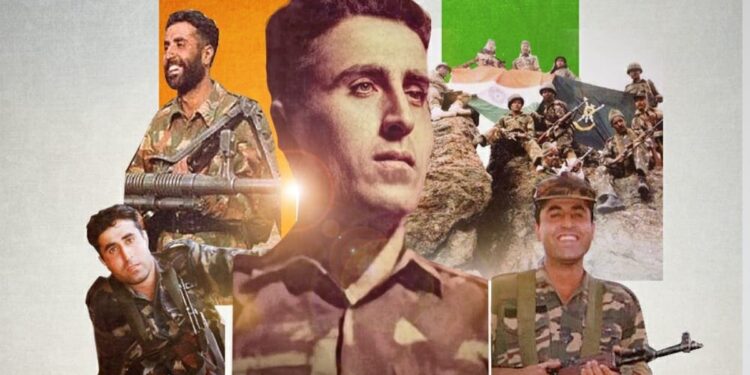
Vikram Batra Biography
An Indian army officer, Captain Vikram Batra was a man of valor and courage. Vikram was born on September 9, 1978, in Ghuggar village near Palampur, Himachal Pradesh. He led one of the most difficult mountain operations in Indian military history. In 1999, Vikram successfully captured Point 5140 at the Kargil war.
Vikram was posthumously awarded the Param Vir Chakra, which is India’s highest and most prestigious award for his leadership and supreme sacrifice. He was referred to as ‘Sher Shah’ (lion king) during the time when India intercepted the internal messages of the Pakistani Army. In 2021, a movie was released starring Siddharth Malhotra and Kiara Advani showcasing Vikram’s journey.
Vikram Batra Early Life
- Captain Vikram Batra was born in a small town in Palampur, Himachal Pradesh.
- Vikram Batra’s parents are teachers by profession.
- Vikram was the third child of his parents.
Vikram Batra Education
- Vikram attained his primary education from his mother.
- He was a brilliant student and a great sportsperson who represented his school at the National level during the ‘Youth Parliamentary Competitions’.
- Apart from academics, Vikram also mastered Karate and won a Green Belt at a National level camp in Manali.
- Vikram also served as the president of the ‘Youth Service Club’ in his college.
- In 1992, Vikram passed his board examination with 82 percent marks.
- In 1994, he was selected to represent his college in the Republic Day Parade as NCC Cadet.
- In 1995, he completed his bachelor’s degree and enrolled himself in Punjab University Chandigarh to pursue MA in English.
Vikram Batra Career
- While studying at the DAV College in Chandigarh, Vikram joined the Air Wing of the National Cadet Corps (NCC), and he received the best NCC Air Wing Cadet of Punjab Directorate in North Zone.
- In 1996, Vikram passed CDS Examination and he was selected in the Service Selection Board (SSB) at Allahabad.
- After one year, he joined Indian Military Academy (IMA) in Dehradun.
- In June 1996, Vikram joined Makekshaw Battalion at the Indian Military Academy (IMA) in Dehradun.
- In January 1999, Vikram Batra was sent on a Commando Course in Karnataka, in which he excelled.
- Then, Vikram was commissioned into the 13 th Battalion of Jammu and Kashmir Rifles (13 LAK Rif).
- Vikram’s first posting was at Sopore in Baramulla District of Jammu and Kashmir.
- Vikram was promoted to the rank of Captain after he successfully captured Point 5140 at the Kargil war.
Vikram Batra Achievements
- Vikram Batra was awarded Param Vir Chakra, which is India’s highest military honor.
- Several landmarks have been named after him as an honor.
On his 21 st death anniversary, the Indian Army paid tribute to Vikram in a video posted on its social media account.
Suggested Read: New Zealand’s Wonder Woman – Jacinda Ardern’s Biography
Shekhar Naik Success Story: A blind cricketer who brought victories at T20 Blind Cricket World Cup
Hasan minhaj biography: a writer, producer, political commentator, actor and more.
Narendra Modi: Unknown Facts and Biography about Indian Prime Minister

Freddie Mercury: The King of Rock Music
Leave a reply cancel reply.
Your email address will not be published. Required fields are marked *
Save my name, email, and website in this browser for the next time I comment.
Recommended Reading
- MilesWeb Hosting: The Ultimate Startup Booster
- 55 Club App Download & Play Color Prediction Games
- 91 Club App Download | Sign Up For Get Upto ₹71 Bonus In Game
- BDG Win App Download | Register & Get Upto ₹51 Bonus
- Daman Games App : A Color Prediction Gaming Website
- Bharat Club APK Download | Sign Up For Free Bonus in App
- Lottery7 App : A Color Prediction Gaming Website
- Satta Matka Today Lucky Number
- KWG Game: A Color Prediction Gaming Website
Chief Justice of India D.Y. Chandrachud: A Man of Law Who is Leading Social Transformation in India
Leader Biography provides you with a range of biographical references, and features the work of some of the leading minds in the business. These compelling stories will make you realize that one needs to be self-motivated in order to be inspired.
Featured Post
Ramnath kovind: a lawyer from dalit community to the presidential palace, shafali verma’s untold cricketing journey, who is nayab singh saini biography of haryana’s new chief minister, who is bajrang punia wrestling his way to success, doctor mahesh mangal and sir ganga ram hospital: the pioneers of hand transplant surgery in india.
Rajat Khare Investor in Artificial intelligence and Deep Tech Domain
Recent News
Daman game: where fun meets real rewards, 91club: the gaming platform to earn real money, radhika gupta: the shark who kept her head high in face of adversity.
- Leader Biography
- Contribute Us
- Privacy Policy
© 2021 Leader Biography. All Rights Reserved.
OUR CHANNELS
- > Culture
- > Captain Vikram Batra Was More Than A Martyr. This Is His Inspiring Story Of Bravery & Dedication
Sep 09, 2017 at 02:35 PM
Captain Vikram Batra Was More Than A Martyr. This Is His Inspiring Story Of Bravery & Dedication
While we continue going on about our lives, we don’t realize that there are men in uniforms who fight every single day to ensure that we’re safe. These soldiers leave their families behind to make sure that our families can be safe. And when danger approaches our nation, they make sure that it returns away right from the border, even if it means laying down their lives for us.
“Ya toh tiranga lehra ke aaunga ya toh tirange mein lipta chala aaunga. Lekin waapis zarur aaunga.”
These words by Captain Vikram Batra aptly sum up the spirit with which the Indian Army lives, just like his life sums up the spirit of the bravehearts who fight at the border. It was with this exact spirit and attitude that he motivated the men of his own battalion to keep fighting during the Kargil War.
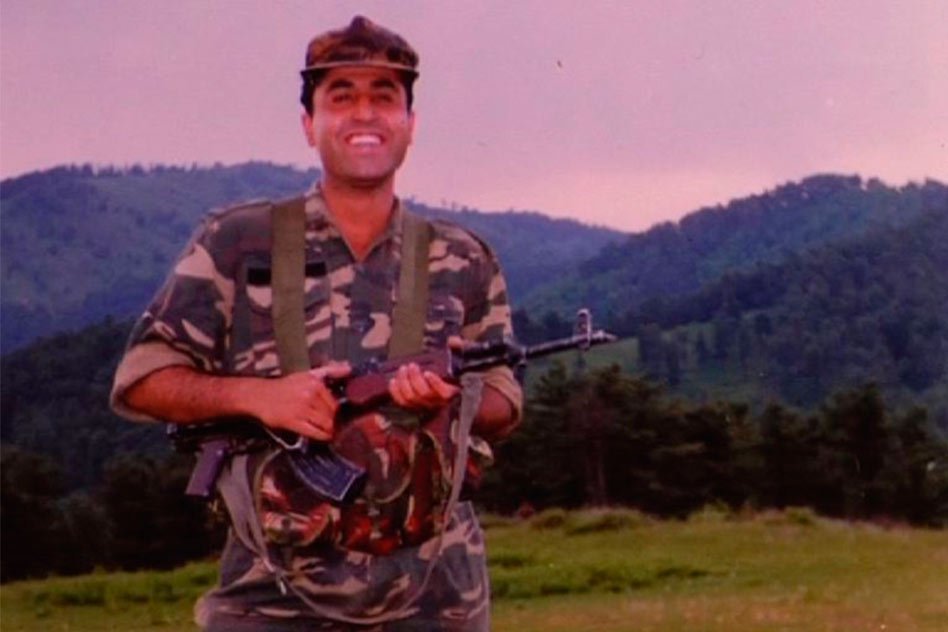
But to say that Captain Vikram Batra was a martyr does not quite fully capture his personality, his struggles, his passion to fight for the nation and the various sacrifices that he made.
To know Captain Vikram Batra, we’ve got to know the young man’s story. Because 22 years later, he still lives on in the hearts of every Indian.
Vikram was born in Himachal Pradesh in 1974 to parents who were educators. He was the third of four kids, his youngest sibling being his identical twin brother who was exactly 14 minutes younger to him. Years later, after he laid down his life for the nation, his mother was to realise why she had twin boys: one was for the nation, always, and the younger one was for her.
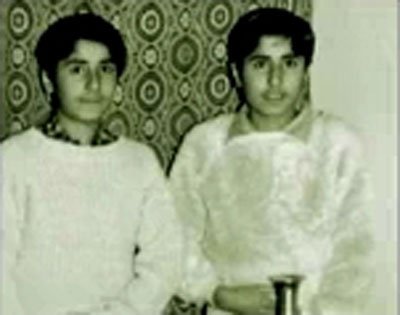
Throughout school, Vikram had been great at sports, playing table tennis and practicing karate with equal efficiency. In fact, he was also a great student who represented his school at Youth Parliament competitions in Delhi.
With this go-getter attitude, Vikram packed his bags to move to Chandigarh and get a degree in Medical Sciences. Throughout his college life, he remained a part of the Army Wing of National Cadet Corps. In fact, he got a chance to perform at the Republic Day parade because of it. It was his first glimpse of the army life and it was then that he had decided to live it.
Once he was back home after his performance at the Republic Day parade, he told his parents he would join the army. He had a great offer from the merchant navy that would have given him a more comfortable life and great financial returns but all that he told his mother was:
“Money is not everything in life. I have to do something bigger in life, something great, something extraordinary, which may bring fame to my country.”
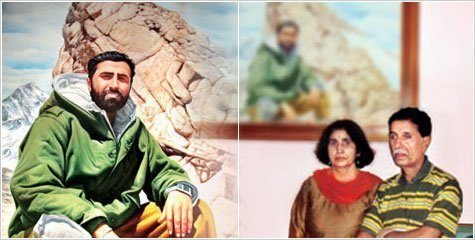
Once he was done with his undergrad, he went on to pursue his Master’s in English from Chandigarh and kept preparing for the Combined Defence Services Examination.
Years had passed since he left that small town in Himachal Pradesh but he was still a go getter who was working towards his dream every single day.
But if he had an unflinching love for his nation, he also had a deep bond with Dimple. It was during his time in his Masters that he met and fell in love with her.
The two were together for four years but were always at a distance. Vikram was preparing to become Captain and had to train hard at the academy in Dehradun. He would come down to Chandigarh whenever he got leave. The two couldn’t wait to tie the knot which would happen only once the Kargil War got over. As it turns out, Dimple is still in waiting. Thinking about having a conversation with Vikram, she told The Quint in 2017:
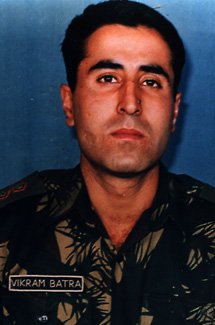
It was 1997, the year that Vikram finally transformed into Captain Vikram Batra of the 13th battalion of the Jammu and Kashmir Rifles. His brother recounted the day on a post on Facebook:
“It was 6 December 1997. Vikram Batra’s dream came true. He took the oath as an Officer of the Indian Army. Mom and Dad pinned up the stars on his shoulder. He stood there smiling from ear to ear in his crew cut and several kilos thinner after the rigorous training. It was a grand moment. But it wasn’t going to be an easy life and Vikram knew that.”
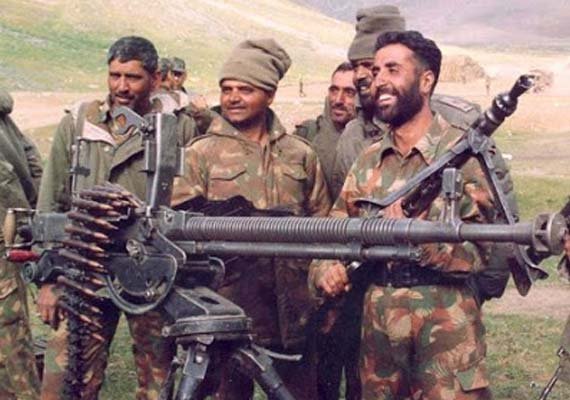
He had always been great because he had a passion to serve the nation. He just knew it to be his calling. In fact, the intercepted messages from the enemy tell us that he was called Sher Shah by them. Even the enemy knew who they were dealing with.
And then the Kargil War broke out.
After fighting bravely for days, that too in a terrain whose height and atmosphere are both extremely difficult to deal with, Captain Vikram Batra was not going to back down. It was in early July that he found himself in circumstances where he had to make a direct assault on the enemy. At a height of 16,087 feet and panting for his breath, he made progress, screaming the battle cry of JAK RIF – “ Durge maata ki jai .”
The attack resulted in 7 soldiers of the enemies dying and Indians getting an upperhand in the area. The opponent army was retreating but there was still a fight. And then Batra realised that one of his soldiers had been shot. He had to evacuate his soldier to take him to a safer place where he could get help.
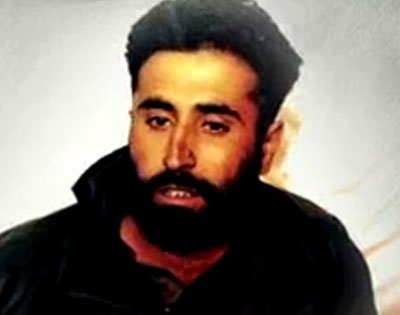
“The Safety, Honour and Welfare of your country comes first, always and every time. The Honour, Welfare and Comfort of the men you command comes next. Your own Ease, Comfort and Safety comes last, always and every time.”
This message by his brother captures the void that Indian Army’s Sher Shah left in the hearts of people who loved him:
“We would dream of the day he would command his regiment and I would get a chance to attend some of the regimental functions with his family and children. That dream is lost now.”
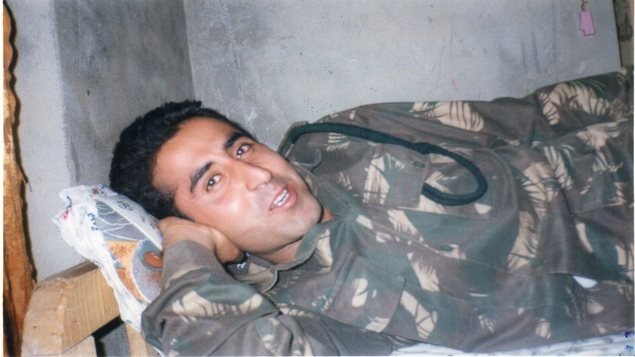
“Never could I have imagined, even in my wildest dreams, that the stories we saw in the famous TV serial, Param Vir Chakra , which we watched at a neighbour’s house in 1985 (we didn’t have a TV at home back then) would one day become so real for me. And Vikram would be the hero. Vikram was awarded the country’s highest gallantry award, posthumously. He was only 24. His famous words from the height of 18,000 feet: “ Yeh Dil Maange More, ” after victory over the enemy, still ring in my ears.
It’s been ten years. A lot has changed. And a lot has remained the same. I have many more grey strands in my hair. Vikram is as youthful as ever. Time cannot touch him.”
When you’re a braveheart with a heart that is always yearning for more, time cannot ever touch you.

follow scoopwhoop

Models Vs Me: Clothes From Sarojini Nagar

Women Guess The Price Of Men’s Clothes

Women Review Mens Intimate Products

₹5000 At Amazon Vs ₹5000 At Flipkart

Drunk Vs Sober Cook Off: Chai & Samosa

Men Guess The Price Of Women’s Dresses

Adult Toy Or Innocent Item?

Men Try Identifying Women’s Intimate Products Part 2

₹10,000 At Uniqlo VS ₹10,000 At Marks & Spencer

Can We Cook Better Than Saransh Goila?

Verbal Ability
- Interview Q
- Send your Feedback to [email protected]
Help Others, Please Share

Learn Latest Tutorials
Transact-SQL
Reinforcement Learning
R Programming
React Native
Python Design Patterns
Python Pillow
Python Turtle
Preparation

Interview Questions

Company Questions
Trending Technologies
Artificial Intelligence
Cloud Computing
Data Science
Machine Learning
B.Tech / MCA
Data Structures
Operating System
Computer Network
Compiler Design
Computer Organization
Discrete Mathematics
Ethical Hacking
Computer Graphics
Software Engineering
Web Technology
Cyber Security
C Programming
Control System
Data Mining
Data Warehouse

Notifications
Gallantry Awards Social Hub
#salute our bravehearts share.
Ministry of Defence
- Right to Information(RTI)
- Tenders/Positions
- List of Officers(PMO)
Download Gallantry Award Mobile App
- Virtual Museum
- About awards
- Gallantrypedia
Advanced Search
Memorials & museums, motivational videos, war history, interview videos.
- Tweet message
- VIKRAM BATRA
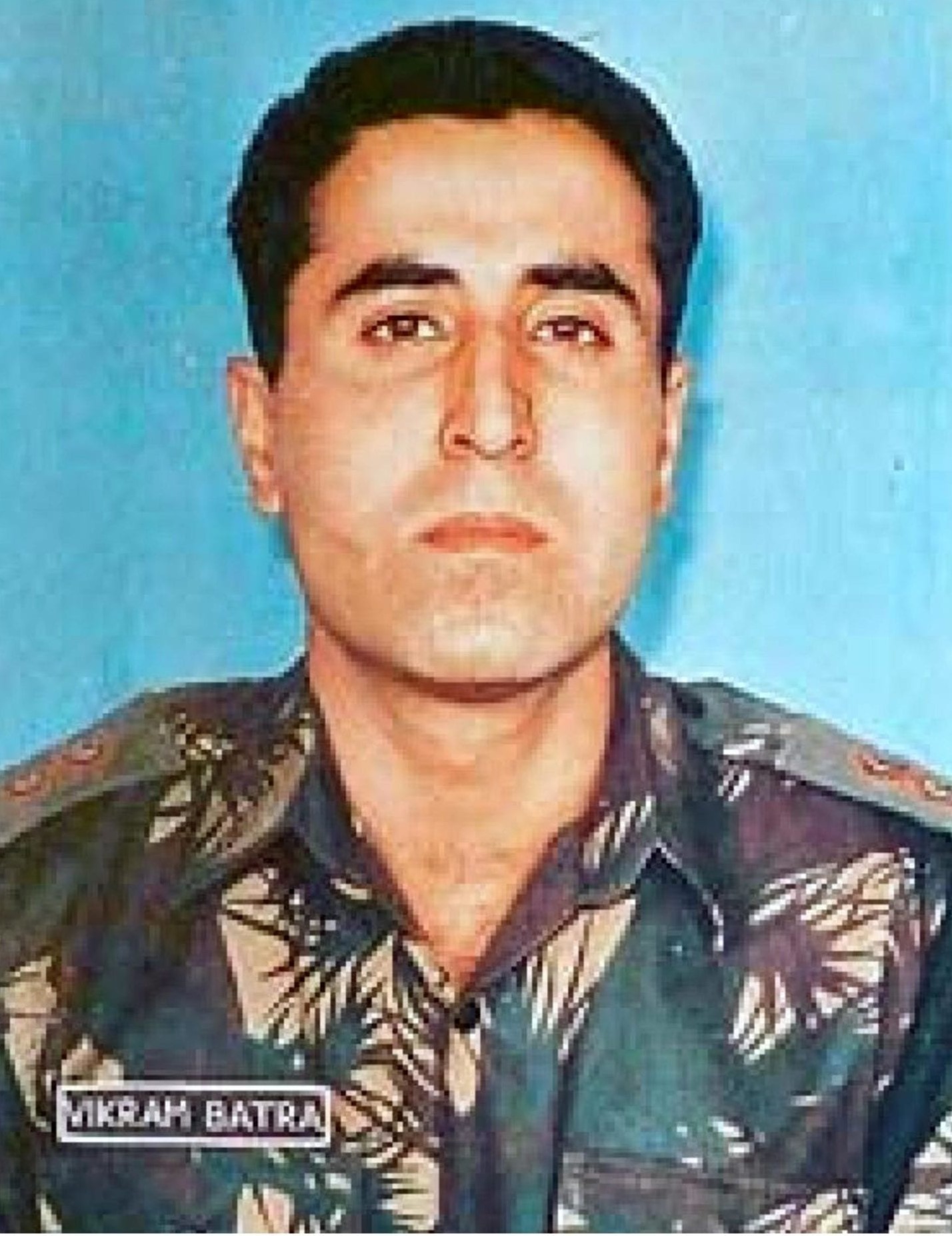
CAPTAIN VIKRAM BATRA
Param Vir Chakra
Citation (PDF)
Rememberance, bibliography, postal stamp.

A bust of Param Vir Chakra Awardee Captain Vikram Batra at the National War Memorial in Delhi. (Source: National War Memorial)
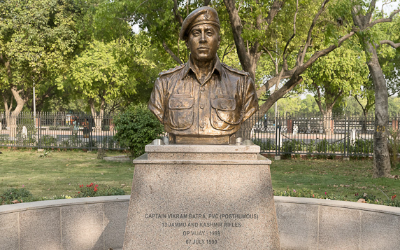
Captain Vikram Batra’s Bust inaugurated at Palampur Military Station, (indianexpress.com)
.jpg)
Captain Vikram Batra’s mother Kamal Batra at the Palampur Military Station memorial (indianexpress.com)
.jpg)
Captain Vikram Batra’s father Girdhari Lal Batra at the Palampur Military Station memorial (indianexpress.com)
.jpg)
Captain Vikram Batra (PVC) filling station set up in Palampur (rediff.com)
.jpg)
Punjab University dedicates shooting range to Kargil War Hero- Captain Vikram Batra (hindustantimes.com)
.jpg)
13 JAK RIF reunion stamp released by Army Postal Service with a photograph of the PVC Awardee from Kargil, Capt Batra
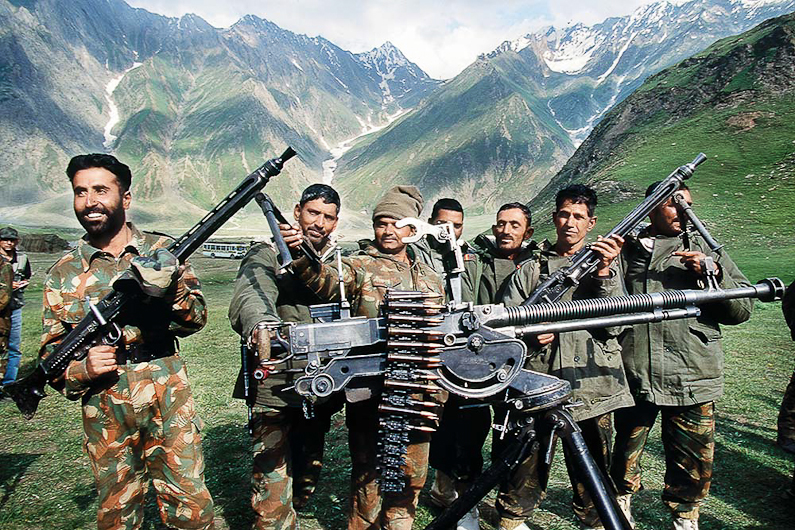
Captain Batra with his team inspecting the weapons. (Source: outlookmagazine.com)
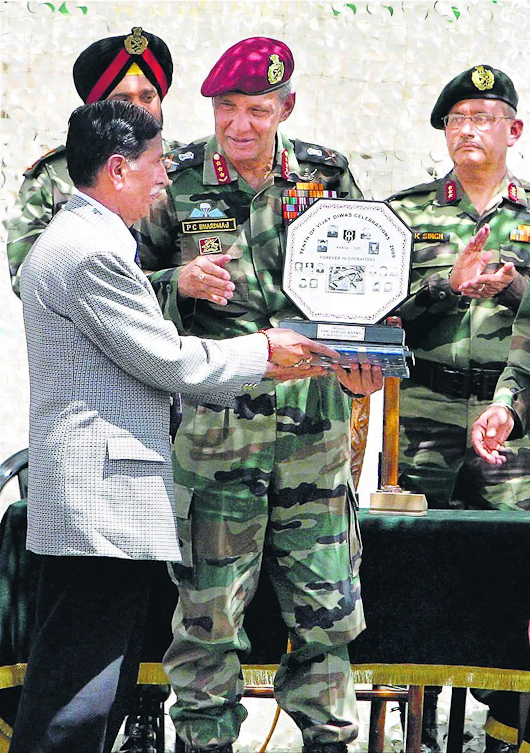
GL Batra, father of Captain Vikram Batra honoured on the 10th Anniversary of Kargil for his son’s supreme sacrifice in the highest tradition of Indian Army. (Source: betterindia.com)
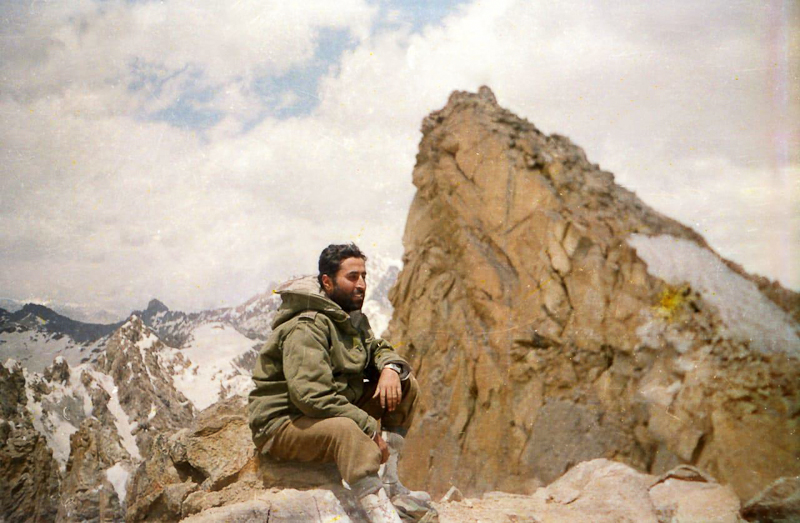
Captain Batra glancing down from the high peaks of Kargil. (Source: thenewsnow.co)
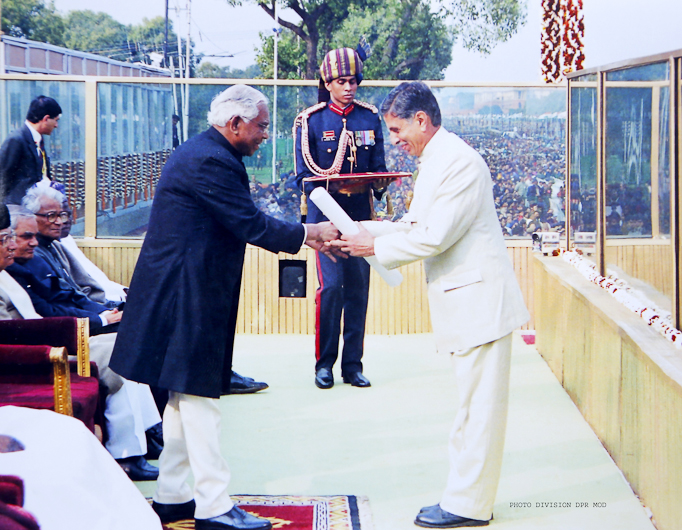
Captain Vikram Batra’s father Girdhari Lal Batra receives the Param Vir Chakra from the then President KR Narayanan, (Source: Photo Division DPR MOD).
- Col. Gurmeet Kanwal. Heroes of Kargil. Army Headquarters, New Delhi. (2002)
- Lt General (retd) YM Bammi, Kargil 1999: The Impregnable Conquered, Gorkha Publishers, New Delhi (2002)
- Colonel SC Tyagi, The Kargil Victory: Battles from Peak to Peak. Speaking Tiger publication (2019)
- Cardozo, Ian, Param Vir: Our Heroes in Battle (2003)
- Ballabh, Anand, Insights into Infantry Regiments: A Basic Factbook. Forward Books publications. New Delhi (2013)
- Gandhi, S.S. Portraits of Valour: India’s Highest Gallantry Awards and Their Recipients. The Defence Review. (Ed 2006).
- Amarinder Singh, “A Ridge Too Far: War in the Kargil heights 1999”, Patiala: Motibagh Palace (2001)
- Captain Vikram Batra (PVC) Honourpoint. (Accessed on 03 May 2022) https://www.honourpoint.in/profile/capt-vikram-batra-pvc/
- Captain Vikram Batra, PVC by GL Batra, (bharatrakshak) (Accessed on 31 May 2022) http://www.bharat-rakshak.com/ARMY/Galleries/Courage/Batra/
- Himachal gets a War Museum at Dharmshala as reminder of Martyr’s. (himachalwatcher.com) (Accessed on 03 May 2022) https://himachalwatcher.com/2017/08/10/himachal-gets-war-museum-at-dharamsala-as-reminder-of-martyrs/
- Shershah: Why the Story of Captain Vikram Batra has enduring appeal, (indianexpress.com) (Accessed on 03 May 2022) https://indianexpress.com/article/explained/explained-why-the-story-of-captain-vikram-batra-has-enduring-appeal-7455335/
- Captain Vikram Batra, the “Sher Shah” Who Died Fighting for India in Kargil (ndtv.com) (Accessed on 31 May 2022) https://www.ndtv.com/india-news/the-legend-of-captain-vikram-batra-the-army-officer-who-died-fighting-for-india-in-kargil-2494970
- Sher Shah of Kargil: The Story of Indian Army Legend, Captain Batra (betterindia.com) (Accessed on 31 May 2022) https://www.thebetterindia.com/120590/vikram-batra-sher-shah-kargil-indian-army-paramvir-chakra-biopic/
- The Kargil War Veteran recalls how Captain Batra saved his life before getting martyred, (scoopwhoop.com) (Accessed on 31 May 2022) https://www.scoopwhoop.com/news/kargil-war-veteran-recalls-how-captain-vikram-batra-saved-his-life-before-getting-martyred/
- He still protects Kargil Mountains’: Remembering Captain Batra where he was martyred 20 Years ago. (news18.com) (Accessed on 31 May 2022) https://www.news18.com/news/india/a-lion-who-fought-despite-fever-when-past-welled-up-tears-in-soldiers-eyes-at-kargil-mountains-2221141.html
- Captain Batra Museum at Captain Vikram Batra Filling Station (PVC), Palampur, Himachal Pradesh. (Youtube- Ananthakrishna Bhat K) (Accessed on 03 May 2022) https://youtu.be/fhSuNW_IEGg
- Capt Vikram Batra, (History Under Your Feet) (Accessed on 03 June 2022) https://historyunderyourfeet.wordpress.com/2014/09/08/captain-vikram-batra/
Captain Vikram Batra, Param Vir Chakra(P), 13 Jammu and Kashmir Rifles
Vishal Batra, the twin brother of Captain Vikram Batra tells the story of Luv and Kush. (Source: The Quint)
Captain Batra’s parents recall the gallant action of their son Captain Vikram Batra as they watch the film- Shershah portraying the life of Captain Batra.(Source: The Quint)
There was one soldier whose life was saved by Captain Vikram Batra. Captain Naveen Nagappa shares the story. (Source: ETimes)
After two decades of Kargil, the iconic snippet from the interview of Captain Vikram Batra was telecasted again by the same news portal that conducted his interview. (Source: NDTV)
Vishal Batra, twin brother of Captain Vikram Batra narrates the story of his brother who made the supreme sacrifice in defending the country. (Source: Tedx Talks)
A narration of the story of Captain Vikram Batra who displayed conspicuous courage and fearless spirit in the face of the enemy. (Source: India Defence)
A documentary on the legendary soldier who laid down his life at Point 4875 fighting the enemy. (Source: Prasar Bharti Archives)
DISCLAIMER:
Photos, links to publications and videos presented here are not intended to serve as a substitute for consultation and should only be used at the user’s own risk. These are primarily shared because of the extensive coverage available on the subject. No copyright infringement is intended and it is not intended to hurt anyone or make sales of any sort. All copyright belongs solely to the relevant owners/creators. Usage here is purely for Fair Usage in accordance with the Indian Copyright Act 1957.
Dear Soldier, this Nation is blessed to have such sons of the soil. Your sacrifice will be eternally remembered.
Contributed by Samriddhi Thakur on GallantryPedia on 2021-12-03 16:39:41
Photo Gallery
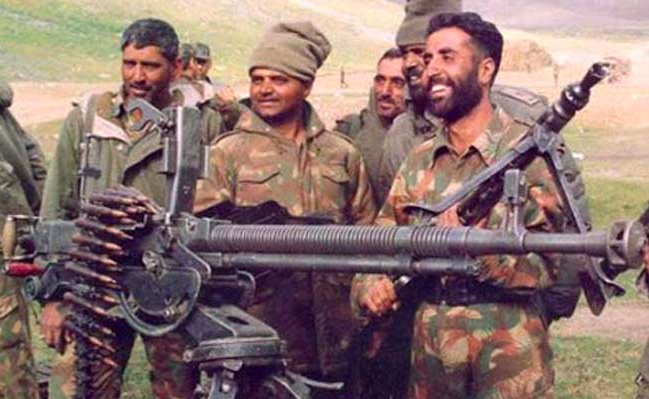
Capt Vikram Batra with his soldiers
Message by1 Pavnesh singh on GallantryPedia on 2021-08-12 22:45:59
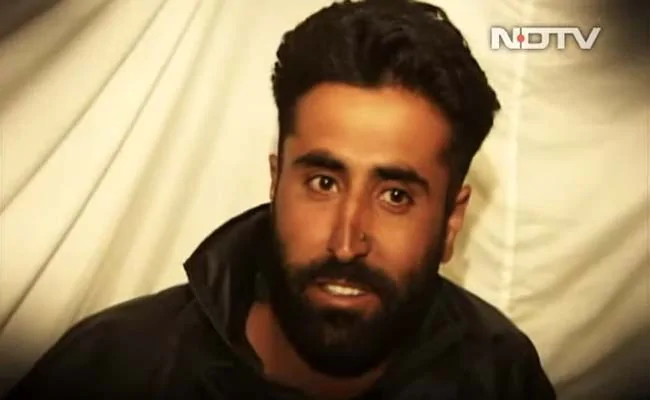
photos of the awardee
Message by1 NIKHIL SAXENA on GallantryPedia on 2021-08-16 11:27:59


Essay on Captain Vikram Batra, Vikram Batra Essay
Are you also searching for an essay on captain Vikram Batra? If yes, then you have fallen on the world’s best website essayduniya.com. Here we will give you an essay on captain Vikram Batra essay on captain Vikram Batra in 750 words, an essay on Vikram Batra 300 words, paragraph on Vikram Batra 150 words is going to be provided. If you are a student of class 3, 4, 5, 6, 7, 8, 9, 10, 11, 12, or any competition and are looking for an essay on captain Vikram Batra then your search is complete.
Essay on Captain Vikram Batra 150 words
Vikram Batra was born in Palampur, Himachal Pradesh, on Monday, September 9, 1974. Kamal Kanta Batra and Girdhari Lal Batra were his parents. He was an officer in the Indian army and is best known for the Kargil war. Since he was a child, Vikram Batra has had a strong desire to join the army. In 1996, Batra passed the CDS test. On December 6, 1997, Batra became a commander in the Indian Army. He was made captain after taking point 5140 in the Kargil War of 1999. On August 15, 1999, he was given the Param Vir Chakra. He was also called the “Lion of Kargil” and the “Kargil hero” because of how brave and brave he was. On Wednesday, July 7, 1999, Vikram died in the Kargil war.
Essay on Captain Vikram Batra 300 words
We don’t realize that there are men in uniforms who fight every day to keep us safe while we go about our daily lives. These soldiers have to leave their families behind to keep our families safe. And when danger comes close to our country, they make sure it goes away at the border, even if it means giving their lives for us.
“Ya toh tiranga lehra ke aaunga ya toh tirange mein lipta chala aaunga. Lekin waapis zarur aaunga.”
These words by Captain Vikram Batra say a lot about the way the Indian Army lives, just as his life says a lot about the way the brave men and women who fight at the border live. During the Kargil War, he welcomed the men in his own battle group to keep fighting with the same spirit and attitude.
Vikram was born in 1974 in Himachal Pradesh to teachers. He was the third of four children, and his twin brother, who was 14 minutes younger than him, was the youngest. Years after he died for his country, his mother would understand why she had twin boys: the older one was always for the country, and the younger one was for her.
The date was December 6, 1997. Vikram Batra’s dream came true. As an Officer in the Indian Army, he made a vow. Mom and Dad put the stars on his shoulder with safety pins. He stood there with a crew cut and a big smile on his face. After all the hard training, he had lost a few kilos. It was a wonderful time. But Vikram knew that life wasn’t going to be easy.

Essay on Captain Vikram Batra in 750 words
Vikram Batra was an officer in the Indian Army. He was born on September 9, 1974, and died on July 7, 1999. He was given the Param Vir Chakra, India’s highest military medal after he died for his actions during the Kargil War. It was given to him on July 7, 1999.
Early Life and Education
Batra was born in a small town in Palampur, Himachal Pradesh. He was the third child of Girdhari Lal Batra, who was the head of a government school, and Kamal Kanta Batra, who was a teacher. He was the oldest of twin sons. His brother Vishal was born fourteen minutes after him. The twins were called “Luv” (Vikram) and “Kush” (Vishal) by their mother, who was a big fan of the Hindu god Rama.
These were the names of Rama’s twin sons. Seema was one, and Nutan was the other. As a young child, Batra’s mother taught him the basics of reading and writing. He then went to the D.A.V. Public School in Palampur, where he studied until middle standard. He went to Central School, Palampur, for his senior secondary education.
Batra did very well in school, but he was also a good athlete and took part in the Youth Parliamentary competitions in Delhi, where he represented his school at the national level. He was on the table tennis, karate, and other sports teams for both his high school and his college. In 1990, he and his twin brother both went to the All India KVS Nationals to play table tennis for their school. He also had a green belt in karate and later went to Manali to take part in a training session for people from all over the country.
After getting his bachelor’s degree in 1995, he went to Panjab University in Chandigarh to get his master’s degree in English. He did this to get ready for the Civil Service Examination better. After he passed the CDS exam in 1996, he was asked to come in for an interview.
Military Career
In June 1996, Batra joined the troop at the Indian Military Academy in Dehradun. After 19 months of training, he graduated from the Indian Military Academy on December 6, 1997, and was made a commanding officer in the Indian Army. He was put in charge of the Jammu and Kashmir Rifles’ 13th troop. After he got his commission, he went to Madhya Pradesh, to train with his army unit. From December 1997 to the end of January 1998, the training lasted one month.
After he finished this training, he was sent to Jammu and Kashmir. This is an area where rebels are active. Several times while Batra was in Sopore, he ran into militants. In one of these fights, Batra was leading his platoon into a dense forest to set up an ambush. A bullet from a militant hit his shoulder and killed one of Batra’s men who was standing behind him. When he went home on leave to Palampur, he always went to the Neugal Cafe. Batra’s last leave from the army was in 1999, for a few days during the Holi festival.
Batra told his parents where he was going and told them they didn’t need to worry. At least once every ten days, he would call his parents. On June 29, 1999, he made his last phone call. The last time Batra talked to his mother was then. He started out as a Junior officer and worked his way up to Captain.
Param Vir Chakra
On August 15, 1999, the 52nd anniversary of India’s independence, he was given the Param Vir Chakra, India’s highest military medal. The late President of India, K. R. Narayanan, gave the award to his father, G.L. Batra, for his late son.
Vikram Batra is also well-known in India for using the phrase “Yeh Dil Maange More!” as his signal that a mission was a success. In an interview, he said that Pakistani soldiers knew who he was. This is also something that people know about him.
Several places were also named after him as a way to thank him. For example, the mountain Batra Top was named after him after the historic capture of Point 4875. The “Vikram Batra Block” is the name of one of the rooms at the Service Selection Centre Allahabad.
lachit borphukan essay in English Essay on Subedar Joginder Singh Essay On Gallantry Award Winners my vision of India in 2047 essay essay on Azadi ka Amrit Mahotsav value of discipline essay essay on Service to Mankind is service to God
Because of the sacrifices he made for the country, Captain Vikram Batra is greatly missed. Wars have resulted in the deaths of a great number of individuals throughout history. Kargil Victory Day is observed annually in memory of the brave people who served their country during the Kargil War. In his tribute, the names of a number of educational institutions, including colleges and universities, have been changed. In addition, there is a statue of Captain Vikram Batra standing in front of the DAV College in Chandigarh.
Leave a Comment Cancel reply
Save my name, email, and website in this browser for the next time I comment.

IMAGES
VIDEO
COMMENTS
Essay on Captain Vikram Batra Gallantry Award Winner - 750 Words. Captain Vikram Batra was a young Indian Army officer who was awarded the Param Vir Chakra, India's highest military decoration, for his bravery during the Kargil War in 1999. He was known by his nickname, "Shershaah", which means "Lionheart". Batra was born in ...
Captain Vikram Batra, PVC (9 September 1974 - 7 July 1999) was an Indian Army officer.He was posthumously awarded the Param Vir Chakra, the highest Indian military decoration, for his actions during the Kargil War; on 7 July 1999, Batra was killed while fighting Pakistani troops around Area Ledge, Point 4875, in the Kargil district of erstwhile Jammu and Kashmir.
Kargil hero, late Captain Batra. (File) A recently released Hindi film, Shershaah, has brought the spotlight back on Captain Vikram Batra, a war hero who had been martyred during the Kargil war of 1999. The film, which stars Sidharth Malhotra and Kiara Advani in key roles, started streaming on Amazon Prime Thursday, in time for the 75th ...
Students are often asked to write an essay on Vikram Batra in their schools and colleges. And if you're also looking for the same, we have created 100-word, 250-word, and 500-word essays on the topic. ... 500 Words Essay on Vikram Batra Introduction. Captain Vikram Batra, also known as Sher Shah (Lion King) in the intercepted messages of the ...
500 Words Essay on Captain Vikram Batra Introduction. Captain Vikram Batra, an officer of the Indian Army, is a name that resonates with valor, courage, and the ultimate sacrifice. His indomitable spirit and unyielding commitment to the nation during the Kargil War of 1999 have made him a legendary figure in India's military history.
Awarded the Param Vir Chakra for his acts of valor during the Kargil War, Vikram Batra gave his life so that the men in his company could live. That singular act of selflessness and courage at the age of twenty-four is something that is worthy of true respect and reverence. Born on 9th September 1974, in Palampur, Himachal Pradesh, Batra was ...
Early days of Vikram Batra's life. Captain Vikram Batra was born on September 9, 1979 in Himachal Pradesh. Vikram spent his childhood in the mountain town of Palampur. He was the elder of the twin sons, born only fourteen minutes before his brother Vishal. The twins were nicknamed: 'Luv' (Vikram) and 'Kush' (Vishal), after the twin ...
GL Batra, father of Capt Vikram Batra, being honoured on the occasion on 10th anniversary of Kargil War in Drass. Photo Source Today, a statue of her son adorns the town square of Palampur, across the statue of another legendary soldier — Major Somnath Sharma, India's first Param Vir Chakra awardee, who also belonged to Palampur.
New Delhi: Ye Dil Mange More — when this slogan from a Pepsi commercial echoed in Kargil's mountains, it inspired a few men and changed the course of the conflict between India and Pakistan.It was Captain Vikram Batra who made it a war cry. In Param Vir: Our Heroes in Battle, Ian Cardozo details how Batra marked the successful recapture of Tololing Ridge's Point 5140 mountain by saying ...
Vikram, a man of his word, lived up to the promise he made to his loved ones. He did return, but wrapped in a Tiranga. (The writer is a veteran Gunner, 6 Field Regiment) The battle account of his ...
Vikram Batra, born on September 9, 1974, in Palampur, Himachal Pradesh, was driven by a deep sense of patriotism from an early age. He joined the Indian Army and was commissioned into the 13th Battalion of the Jammu and Kashmir Rifles, embarking on a journey that would shape his destiny and leave an indelible mark on the nation. ...
Vikram Batra; Param Vir Chakra (Posthumous) 07 Jul. 1999 . Captain Vikram Batra. During Operation Vijay, Captain Vikram Batra of 13 JAK RIF, was tasked to capture Point 5140. Leading from the front, in a daring assault, he killed four enemy troops in close combat battle. On 07 July 1999, his company was tasked to capture a feature on Point 4875.
PVC awardee Captain Vikram Batra was martyred during the Kargil War in 1999 (between India and Pakistan). Shershaah, a film tracing his life journey will be released on Amazon Prime Video on 12 ...
Param Vir Chakra, Captain Vikram Batra achieved great success through his dedication and leadership quality at a young age in the Indian Army. The country lost the gallant officer on July 7, 1999, during the Kargil war. A gallant officer of the Indian Army, Param Vir Chakra Vikram Batra, was born in a middle-class family in Ghuggar village near ...
On August 15, 1999, then-President KR Narayanan awarded Captain Vikram Batra the Param Vir Chakra posthumously. According to his award citation, in the face of the enemy, Captain Vikram Batra demonstrated the most spectacular personal bravery and leadership of the highest order and made the sacrifice in the best traditions of the Indian Army.
The assault to captured Point 4875 began on 5th of July 1999 when lieutenant Naveen Nagappa and his men engaged in a furious gun battle with the terrorist. Lieutenant Naveen was seriously injured after a grenade was lodged at him during the 36 hour battle. Post this Captain Vikram Batra was handed over the task to capture Point 4875.
An Indian army officer, Captain Vikram Batra was a man of valor and courage. Vikram was born on September 9, 1978, in Ghuggar village near Palampur, Himachal Pradesh. He led one of the most difficult mountain operations in Indian military history. In 1999, Vikram successfully captured Point 5140 at the Kargil war.
Sep 09, 2017 at 02:35 PM. Captain Vikram Batra Was More Than A Martyr. This Is His Inspiring Story Of Bravery & Dedication. Grace Bains. While we continue going on about our lives, we don't ...
Captain Vikram Batra was born on 9th September 1974 and hailed from Bandla Gaon in Palampur district of Himachal Pradesh. Son of Shri Girdhari Lal Batra and Smt Kamal Kanta, Capt Vikram Batra received his primary education from D.A.V Public School, Palampur and then completed his senior secondary education from Kendriya Vidyalaya Palampur.
Vikram Batra was commissioned as a lieutenant on December 6, 1997, after completing 30 days of training at Sopore, Jammu, and Kashmir. Vikram Batra completed the Young Officers Course in Madhya Pradesh from 1998 to 1999 after entering the Indian Army. After completing the training, Vikram Batra received an alpha grading and was returned to his ...
Captain Batra's parents recall the gallant action of their son Captain Vikram Batra as they watch the film- Shershah portraying the life of Captain Batra.(Source: The Quint) There was one soldier whose life was saved by Captain Vikram Batra.
Essay on Captain Vikram Batra Essay on Captain Vikram Batra in 750 words. Vikram Batra was an officer in the Indian Army. He was born on September 9, 1974, and died on July 7, 1999. He was given the Param Vir Chakra, India's highest military medal after he died for his actions during the Kargil War. It was given to him on July 7, 1999.
10 Lines Essay on Captain Vikram Batra in English. Find here ten easy points on Captain Vikram Batra for Children and Students of all Classes. These few line...